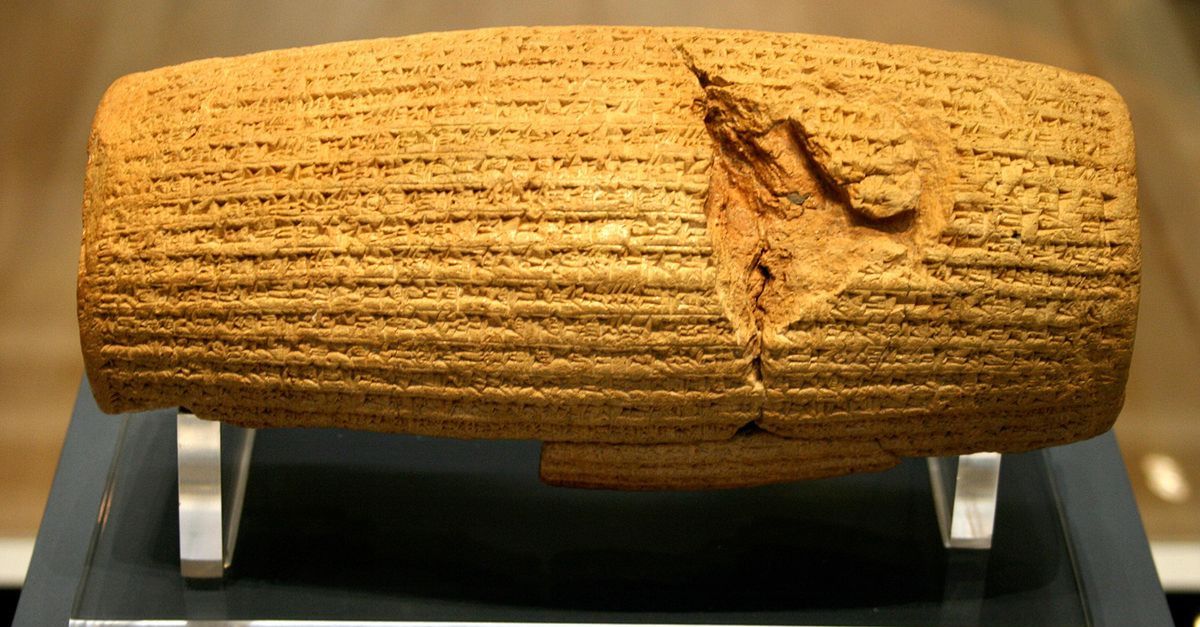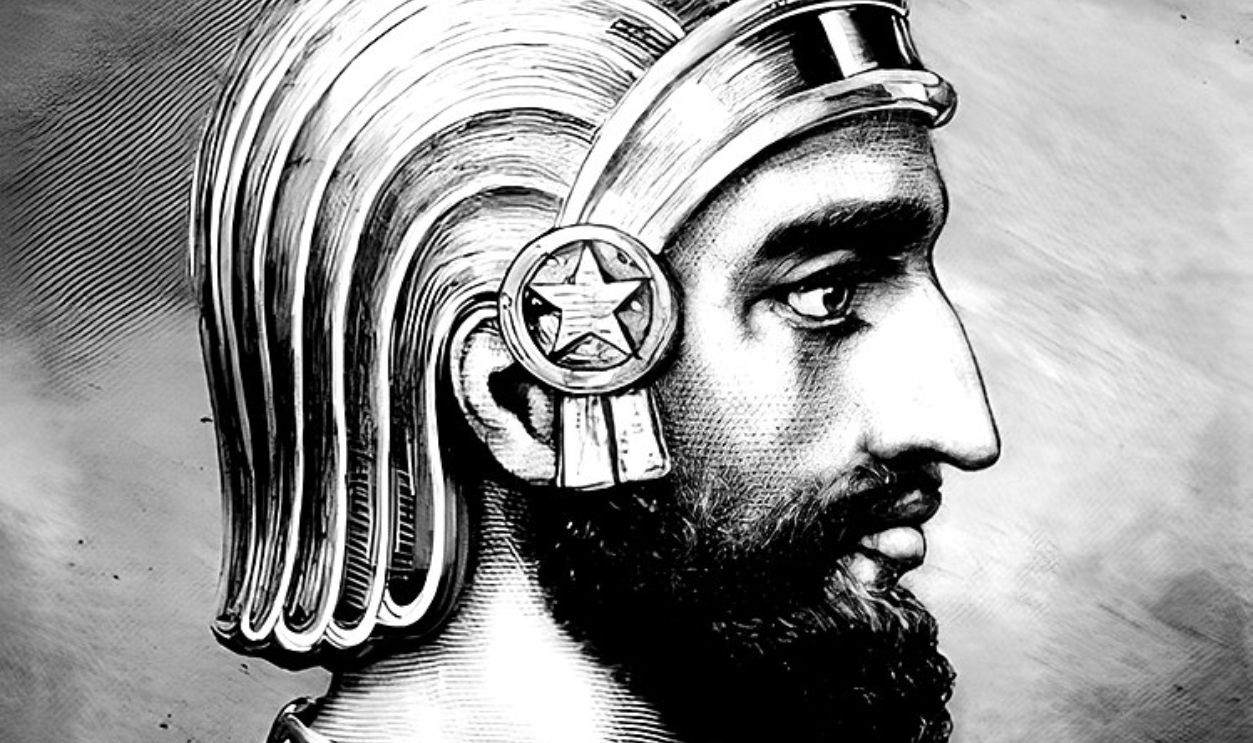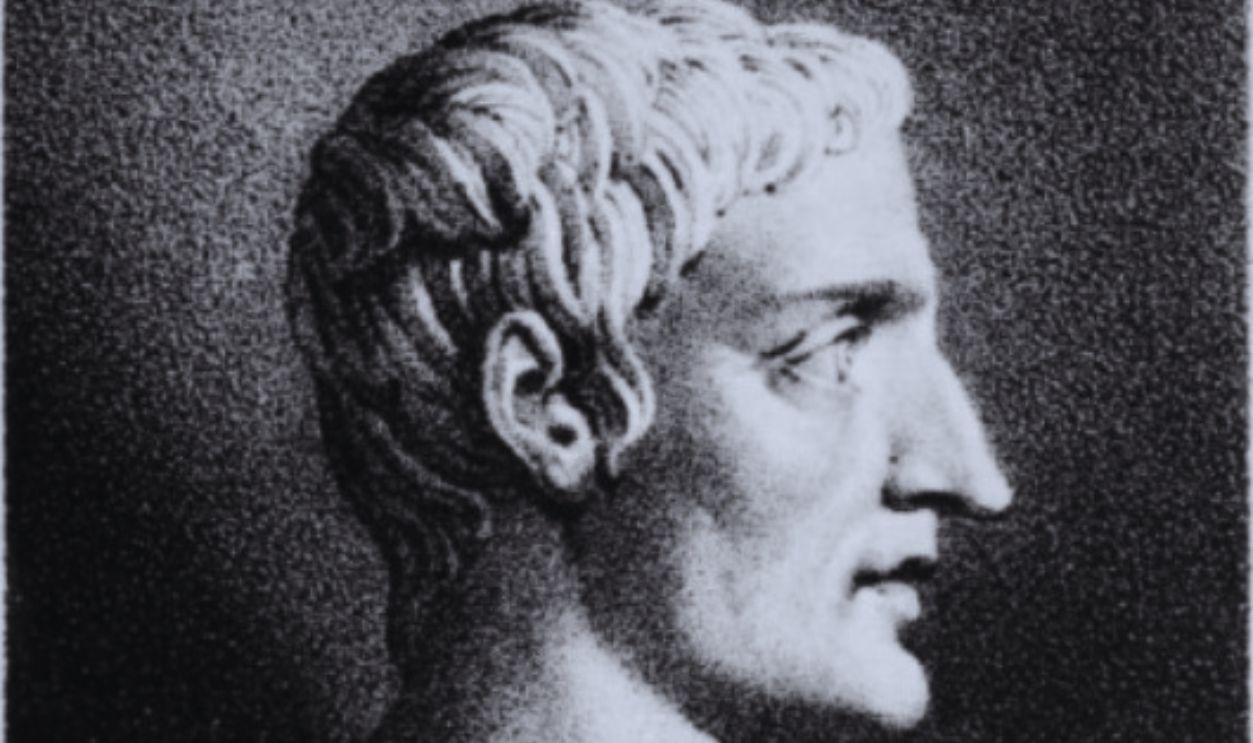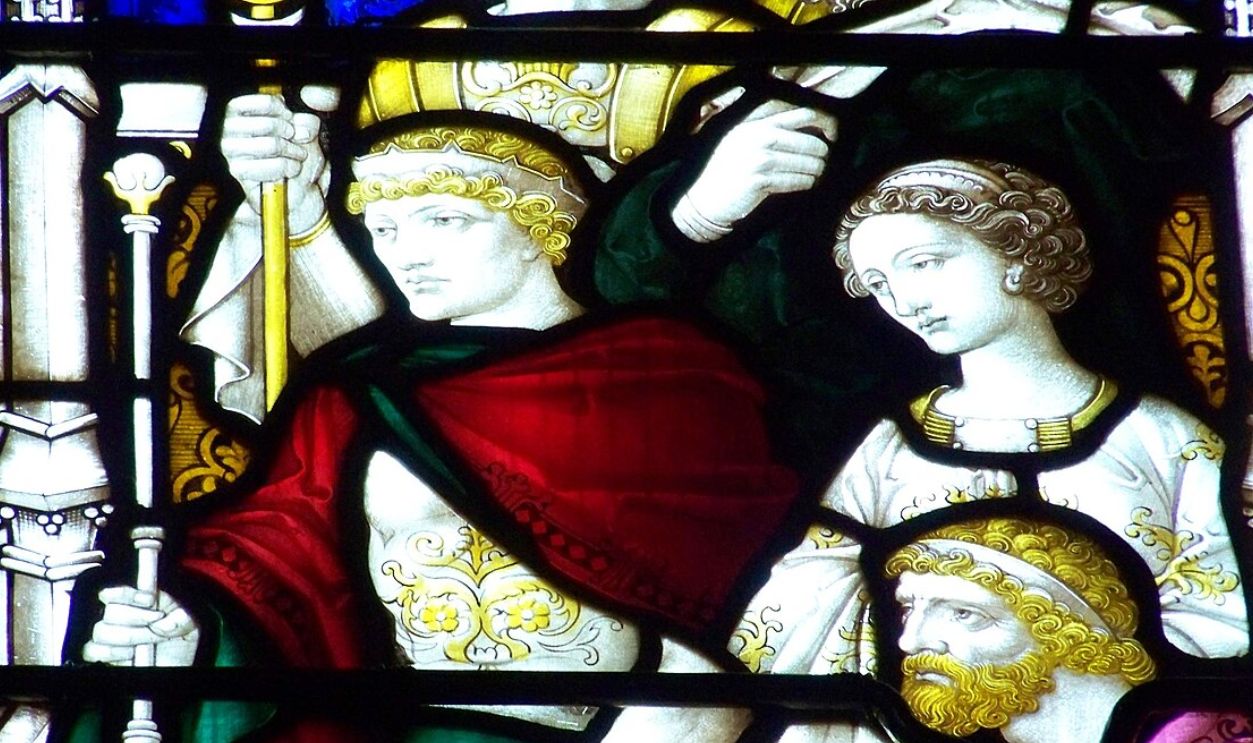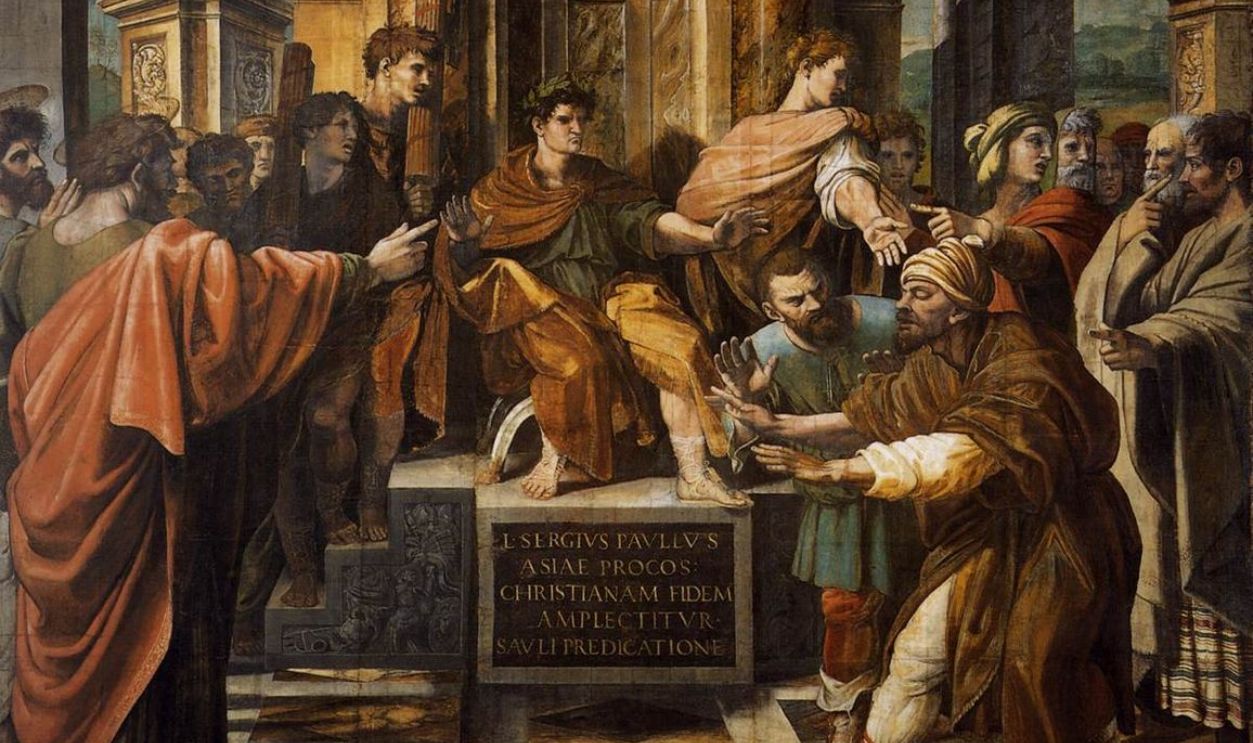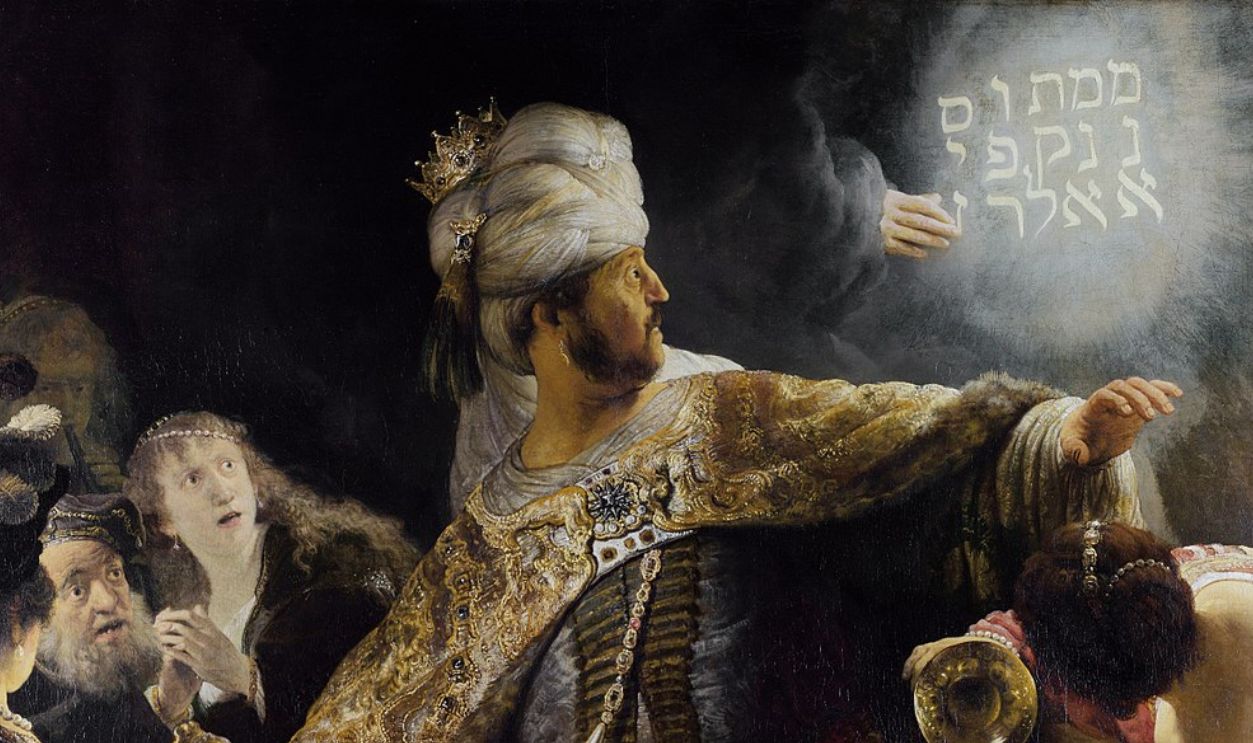Unearthing Ancient Biblical Stories
Ancient inscriptions and carvings bring to life 44 biblical figures whose stories have echoed through time. Expect surprising revelations rooted in genuine discoveries across centuries.

House Of David (Several Bible Books)
The Tel Dan Stele, a weathered stone from the ninth century BCE, marks the enduring legacy of David's dynasty. While other kings bragged about victories, this artifact speaks volumes about the lasting impact of David's family. His name is etched in history, forever shaping the ancient world.
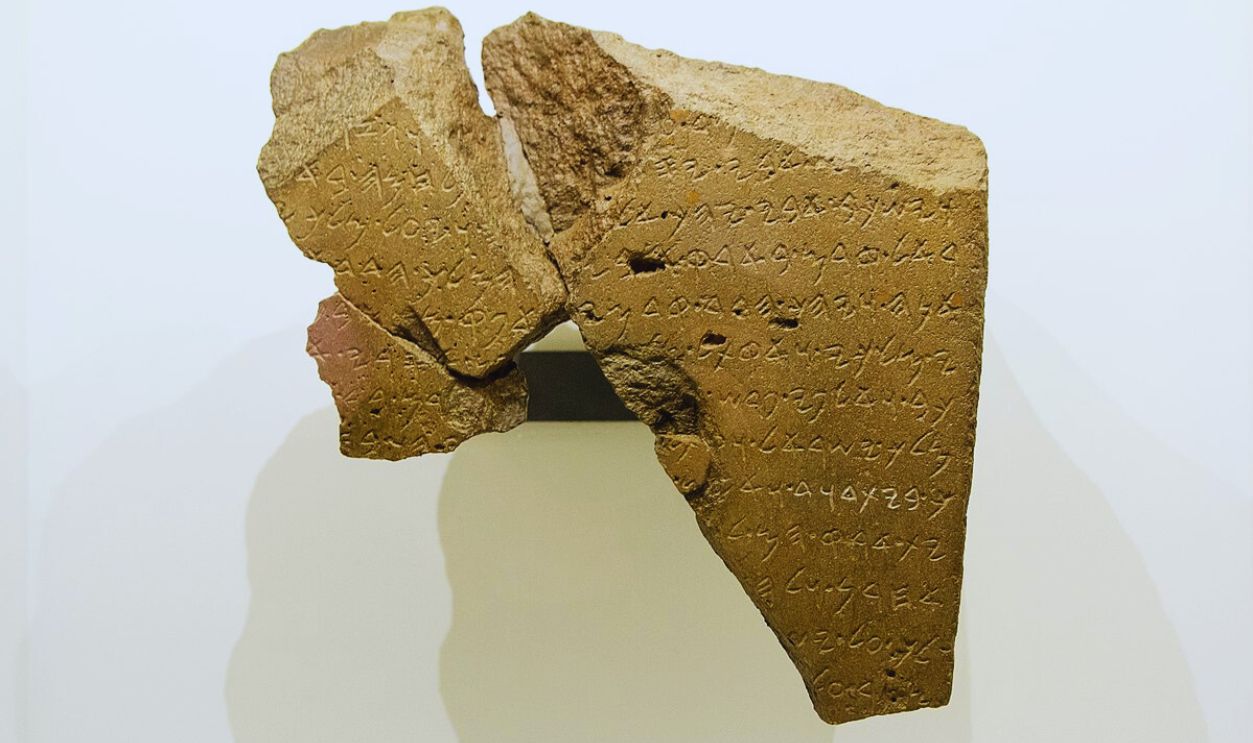 Oren Rozen, CC BY-SA 4.0, Wikimedia Commons
Oren Rozen, CC BY-SA 4.0, Wikimedia Commons
Omri, The Eminent Monarch (Books Of Kings)
Omri's reign, as revealed through the Moabite Stele, isn't just a footnote in history. This ninth-century BCE king shaped Israel’s political scope, and even when his enemies revolted, his name lived on. Omri’s influence stretched beyond the Bible; his legacy endures in ancient records and political shifts.
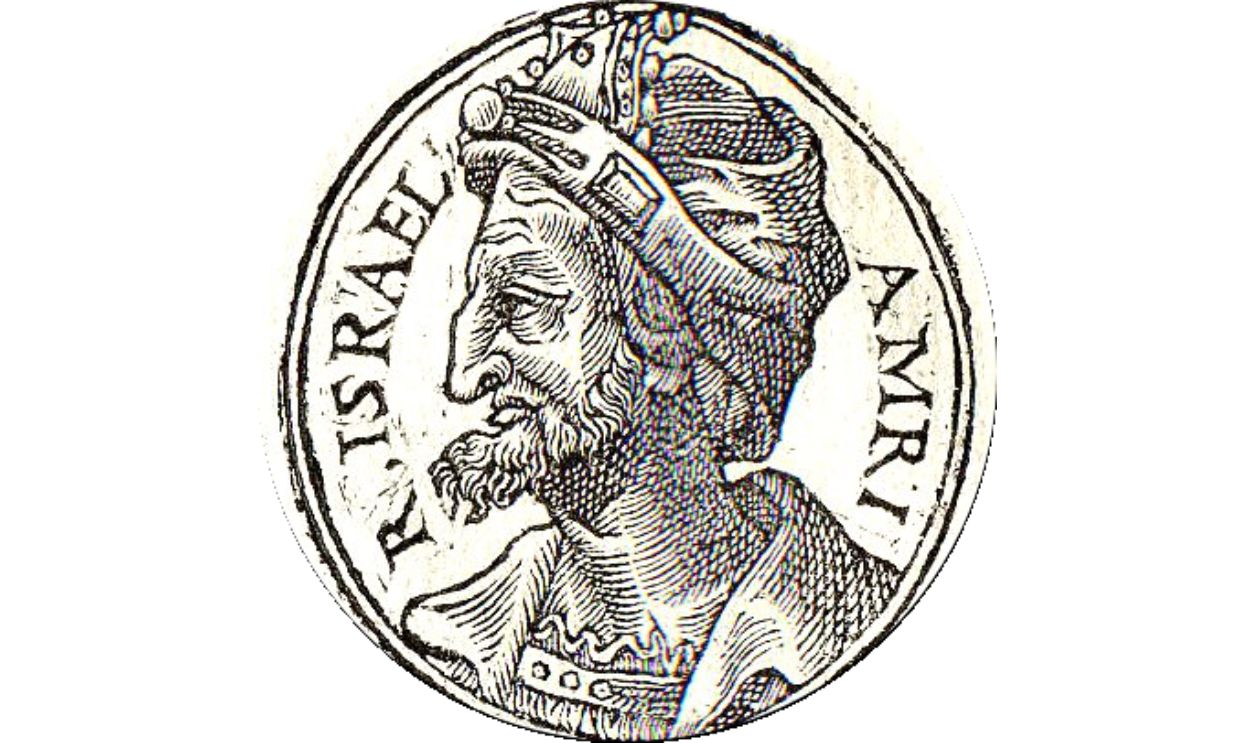 Guillaume Rouille, Wikimedia Commons
Guillaume Rouille, Wikimedia Commons
Ahab In Assyrian Records (Books Of Kings)
The king of the Neo-Assyrian Empire, Shalmaneser III’s inscriptions, give us a peek into Ahab’s world. Israel’s chariot forces stood firm against Assyrian power in the ninth century BCE. These Assyrian records highlight Ahab’s tactical alliances and showcase his legacy across borders.
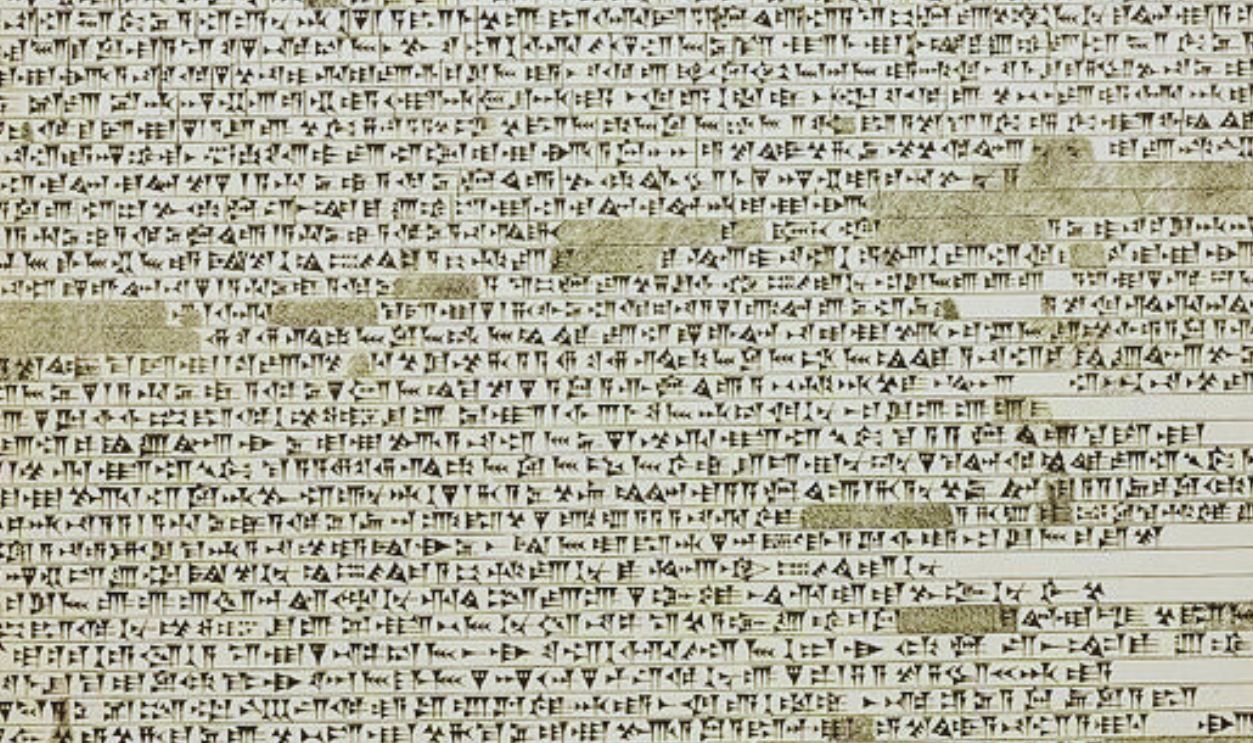 Rawlinson, H.C., Wikimedia Commons
Rawlinson, H.C., Wikimedia Commons
Jehu Bowing Before Shalmaneser (Books Of Kings)
The Black Obelisk tells a fascinating story: Jehu (or his representative) paying tribute to Shalmaneser III. During the ninth century BCE, this surrender wasn't merely an official act but a watershed political episode. It's a graphic encapsulation of Israel's diplomatic marriages and the transient balance of powers.
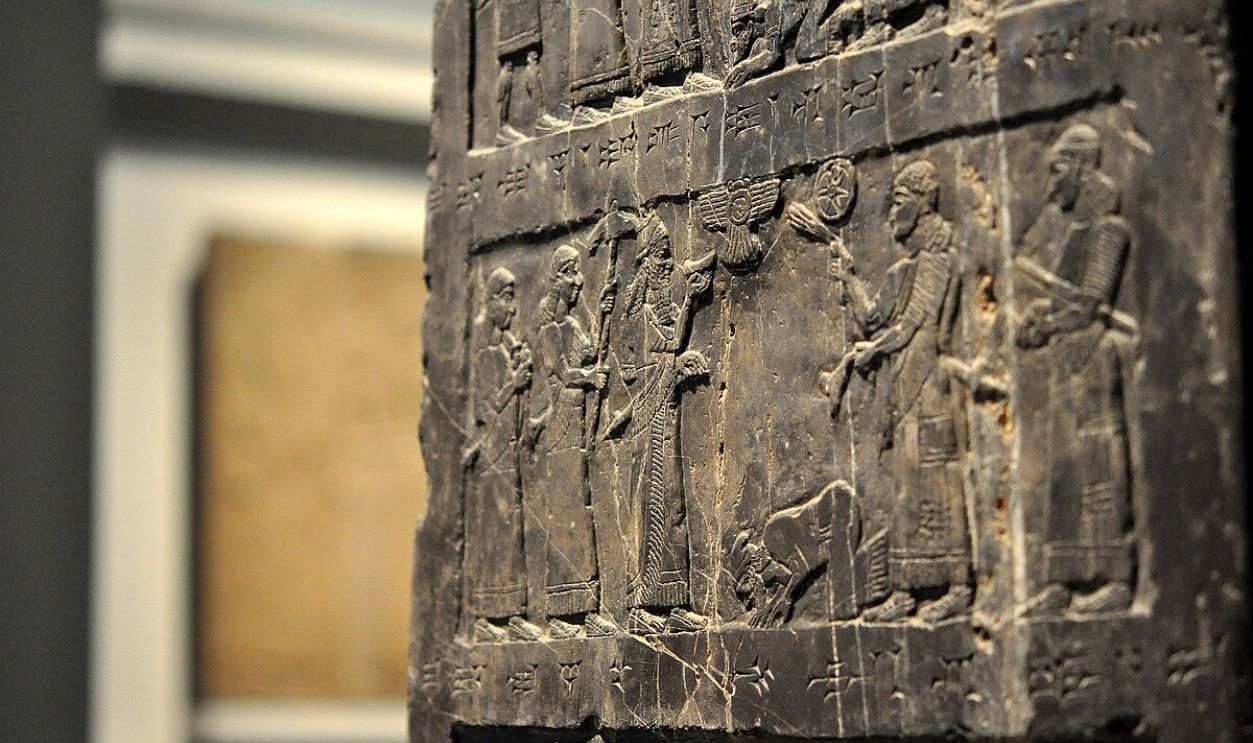 Osama Shukir Muhammed Amin FRCP(Glasg), CC BY-SA 4.0, Wikimedia Commons
Osama Shukir Muhammed Amin FRCP(Glasg), CC BY-SA 4.0, Wikimedia Commons
Hazael And The Aramean Wars (2 Kings)
Hazael’s ambitions, captured in the Tel Dan Stele, show how the Aramean king expanded his control in the 9th century BCE. His battles with Israel were beyond land; they were also about asserting dominance. These inscriptions are a bold testimony to his relentless pursuit of power and territorial pride.
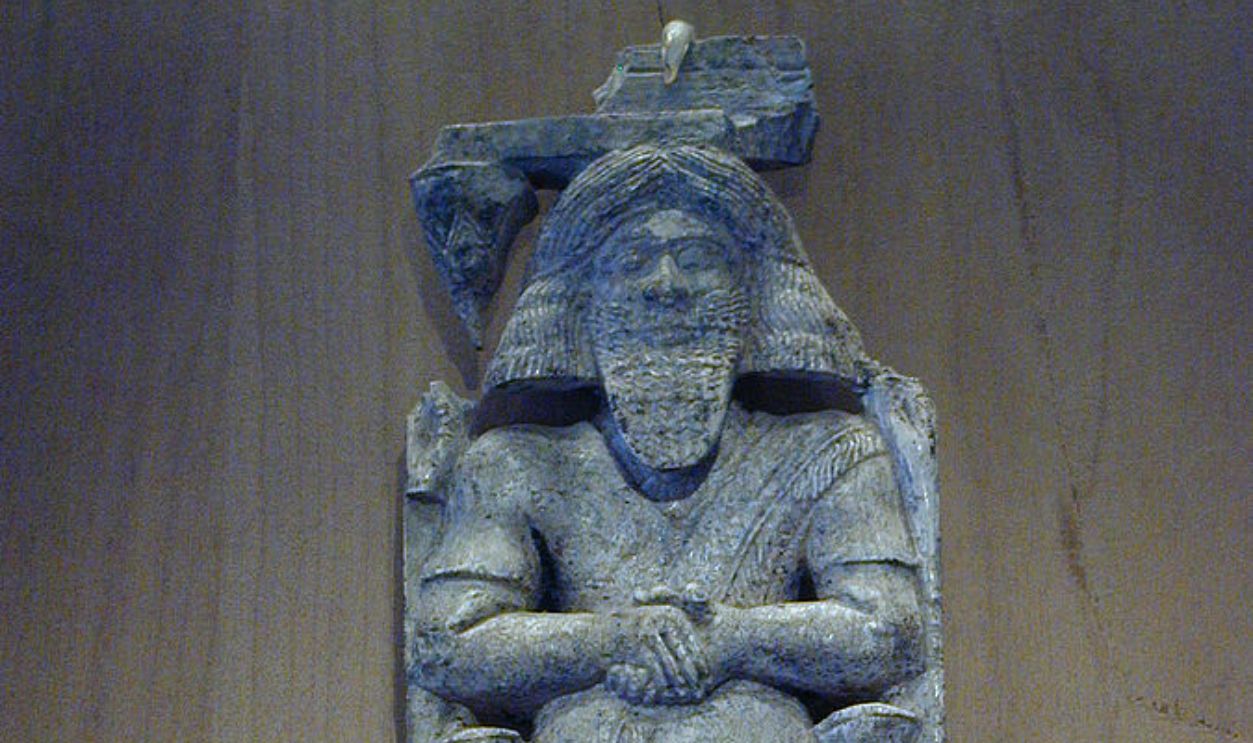 Unknown Author, Wikimedia Commons
Unknown Author, Wikimedia Commons
Mesha, The Moabite King (2 Kings 3)
The Mesha Stele proclaims Moab’s victory over Israel, which showcases the Moabite king's pride in his triumph. This ninth-century BCE inscription mirrors the biblical conflict in 2 Kings 3 and highlights the intense rivalry for power between neighboring kingdoms. Moab’s victory is carved in stone, and it echoes through history.
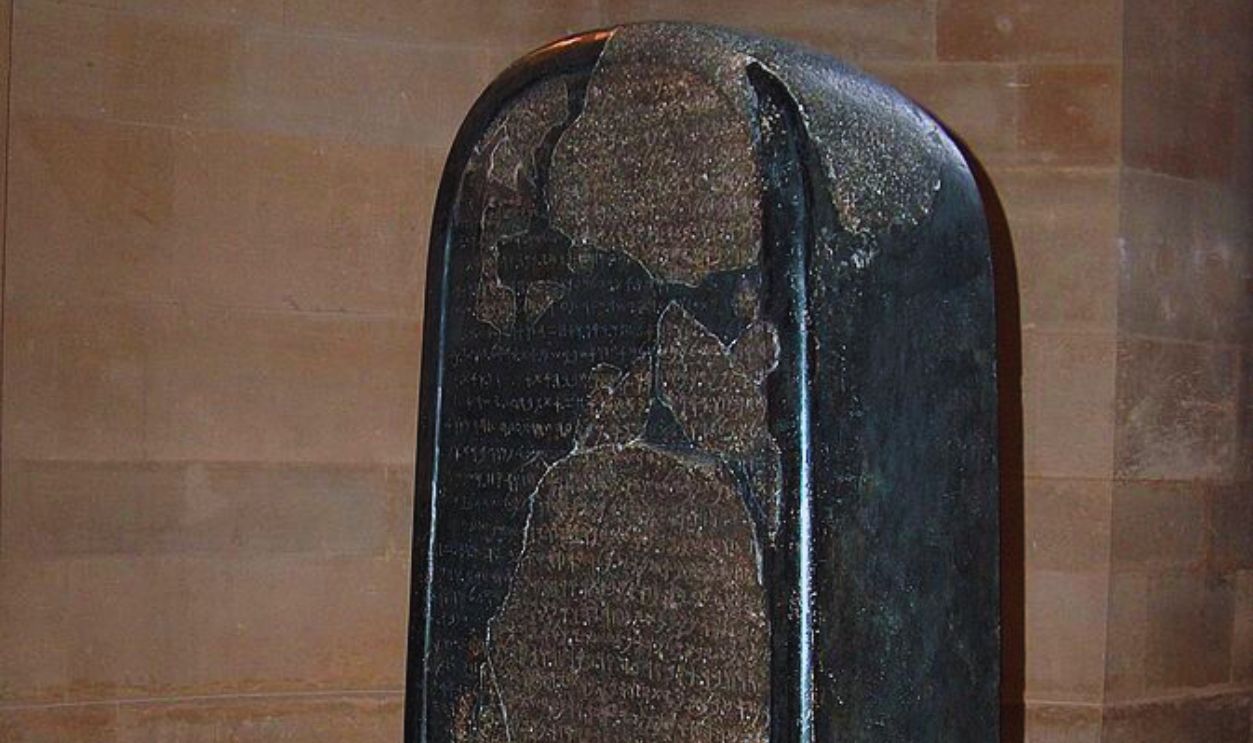 Louvre Museum, CC BY-SA 4.0, Wikimedia Commons
Louvre Museum, CC BY-SA 4.0, Wikimedia Commons
Shishak Campaign Inscriptions (1 Kings 14)
Pharaoh Sheshonq I’s Karnak reliefs mark his 925 BCE invasion of Judah, listing the subdued cities. These hieroglyphs show Egypt’s power, and they also reflect the tense power struggles in the region. The inscriptions tie into biblical stories, offering a deeper look into Egypt’s growing influence over Judah.
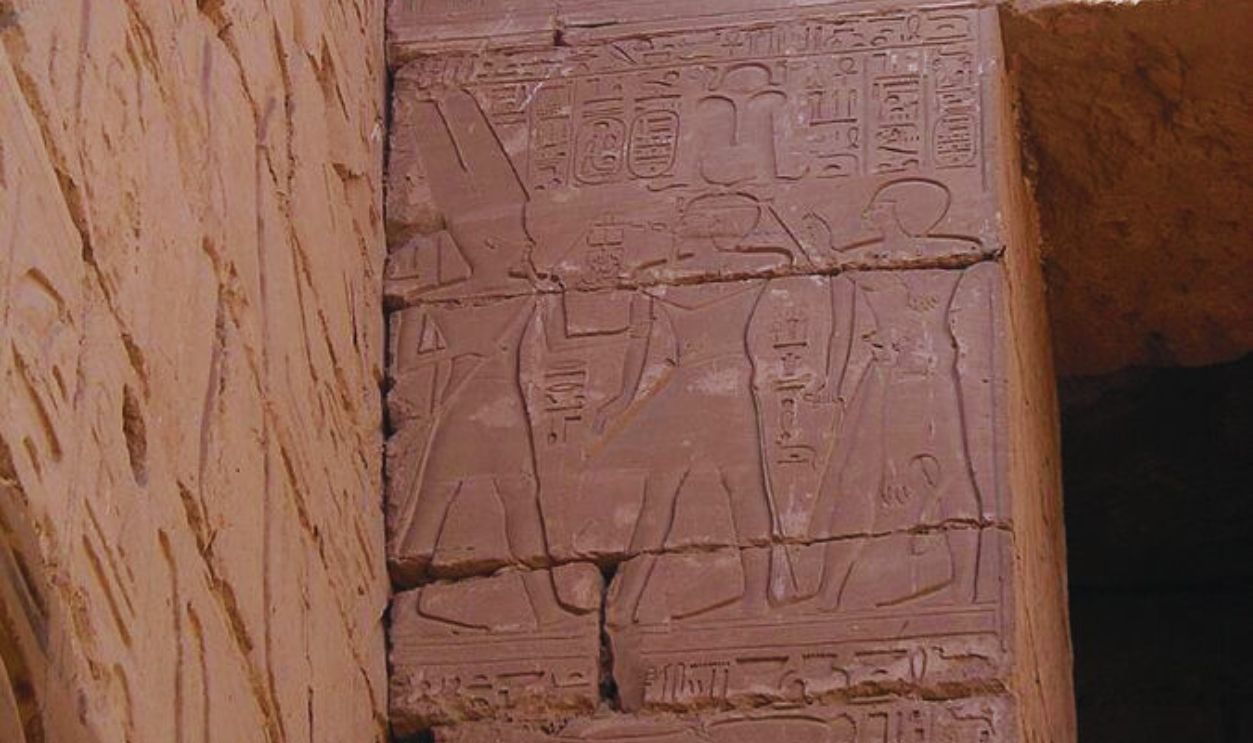 Neithsabes, CC BY-SA 3.0, Wikimedia Commons
Neithsabes, CC BY-SA 3.0, Wikimedia Commons
Hezekiah And The Assyrian Siege (2 Kings 18–19)
Sennacherib’s Prism recounts the intense siege of Jerusalem in 701 BCE. Hezekiah’s strategic fortifications and water tunnels saved the city during one of the ancient world’s most tense standoffs. These records capture the resilience of a kingdom that refused to bow to Assyrian might and cement Hezekiah’s legacy.
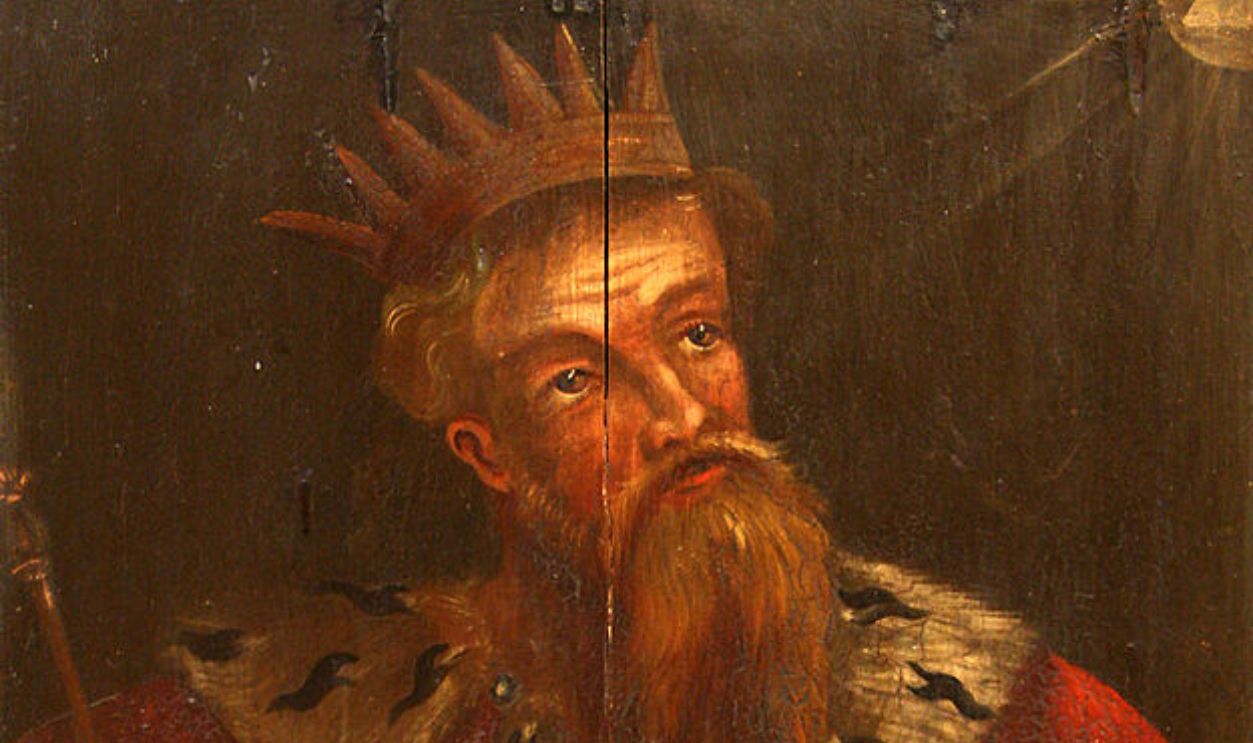 David Castor, Wikimedia Commons
David Castor, Wikimedia Commons
Sennacherib Subduing Cities (2 Kings 18)
Depicting a chilling narrative of warfare in 700 BCE, the Lachish reliefs bring Sennacherib’s conquests to life. The scenes of siege ramps and captives capture the Assyrian empire’s ruthless expansion. These vivid images align with the biblical story in 2 Kings 18, showing the immense consequences of Assyrian dominance.
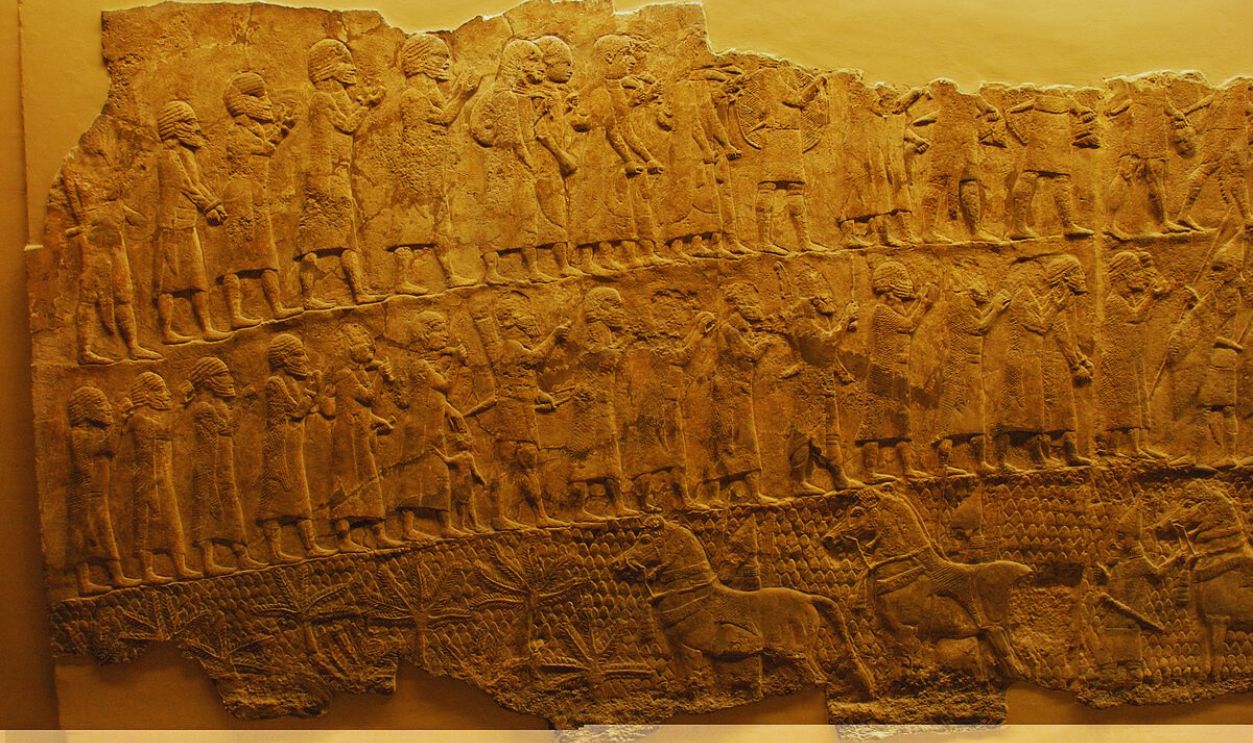 Mike Peel (www.mikepeel.net)., CC BY-SA 4.0, Wikimedia Commons
Mike Peel (www.mikepeel.net)., CC BY-SA 4.0, Wikimedia Commons
Manasseh As Vassal King (2 Chronicles 33)
Esarhaddon’s records show King Manasseh’s submission to Assyria in the seventh century BCE. This was Judah’s survival strategy under the looming shadow of Assyria’s empire. Manasseh’s compliance highlights the shifting power dynamics and the precarious position of Judah in a turbulent world.
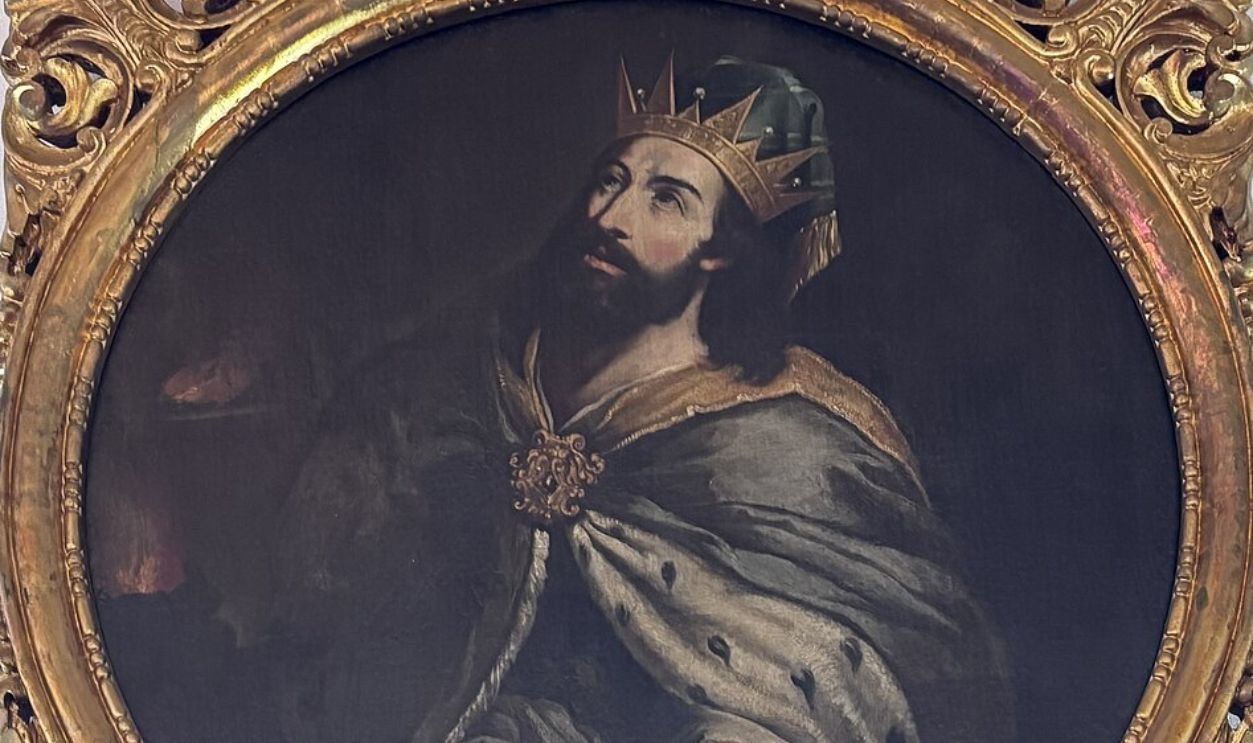 Ranoutofusername, CC BY-SA 4.0, Wikimedia Commons
Ranoutofusername, CC BY-SA 4.0, Wikimedia Commons
Jehoiachin In Babylonian Tablets (2 Kings 24:15-17)
Amid Babylonian rule, the Jehoiachin monarchy’s memory lingered, which connects ancient documents with the biblical accounts of exile. The Babylonian Ration Tablets provide a glimpse into the life of Judah’s captive king in the sixth century BCE. These clay records ensure his identity endures, even in exile.
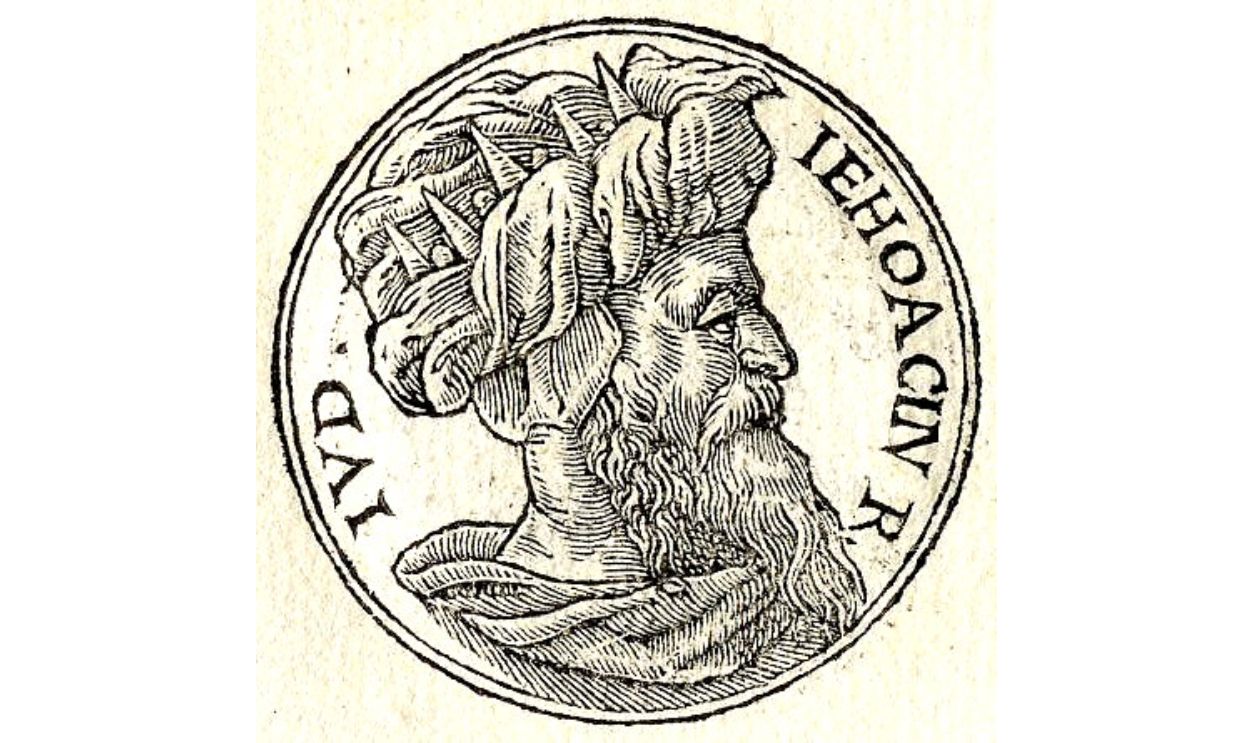 Guillaume Rouille(1518?-1589), Wikimedia Commons
Guillaume Rouille(1518?-1589), Wikimedia Commons
Nebuchadnezzar II, The Conqueror (2 Kings 24-25)
Babylonian Chronicles document Nebuchadnezzar II’s siege of Jerusalem in 587 BCE, cementing his authority. His powerful campaigns and towering walls revealed an empire's dominance. These records echoed in the Bible, showcase his relentless conquest, overshadowing smaller states and marking Judah's final downfall under his rule.
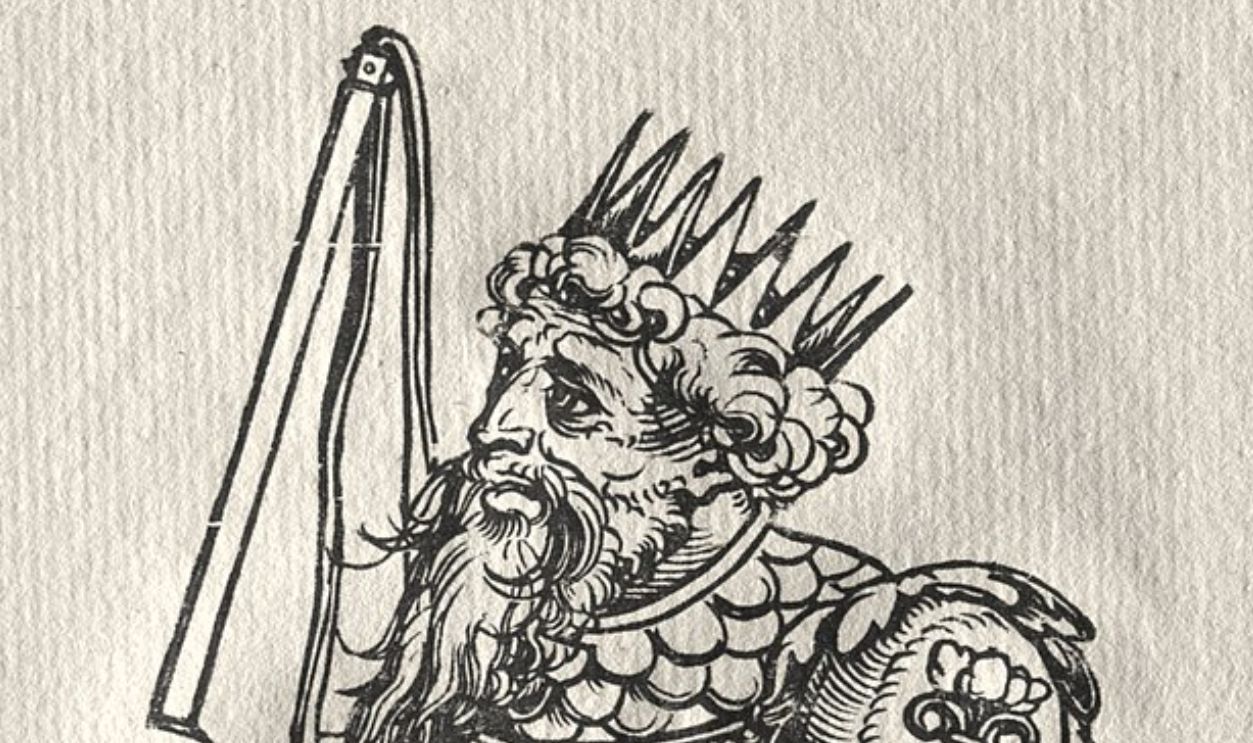 Georg Pencz, CC0, Wikimedia Commons
Georg Pencz, CC0, Wikimedia Commons
Cyrus The Great Freeing Exiles (Ezra 1:1-4)
The Cyrus Cylinder, from about 539 BCE, outlines Cyrus’s policy of liberating exiled peoples. This decree allowed exiles to return and rebuild their cities. The policy echoes biblical themes of restoration, which bridges imperial decisions with the hopes of a people returning to their land and faith.
Darius And Post-Exilic Reforms (Ezra 5)
Darius’s governance extended to Jerusalem, where Ezra 4-6 describes his support for reconstruction. The Behistun Inscription, carved high in the cliffs, tells of Darius I’s vast empire in the late sixth century BCE. These reforms balanced imperial power with local religious restoration, reflecting a more unified empire.
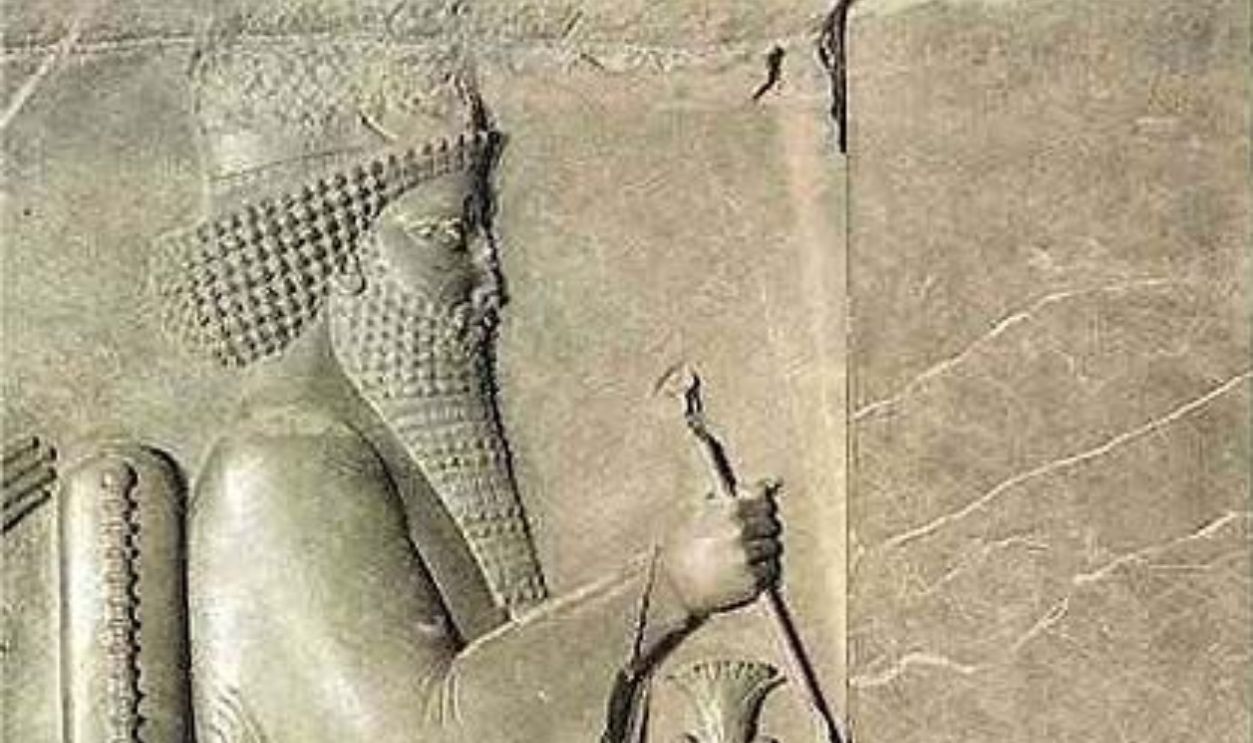 Frank-Haf, CC BY-SA 4.0, Wikimedia Commons
Frank-Haf, CC BY-SA 4.0, Wikimedia Commons
Hoshea, The Final Israelite King (2 Kings 17:1-6)
Assyrian records mention Hoshea’s tribute before Samaria’s fall in 722 BCE. Failed alliances and local turmoil led to the end of the northern kingdom. This pivotal event, highlighted in Assyrian annals, marks the collapse of Israel and demonstrates the cost of indecisiveness when facing Assyrian expansion.
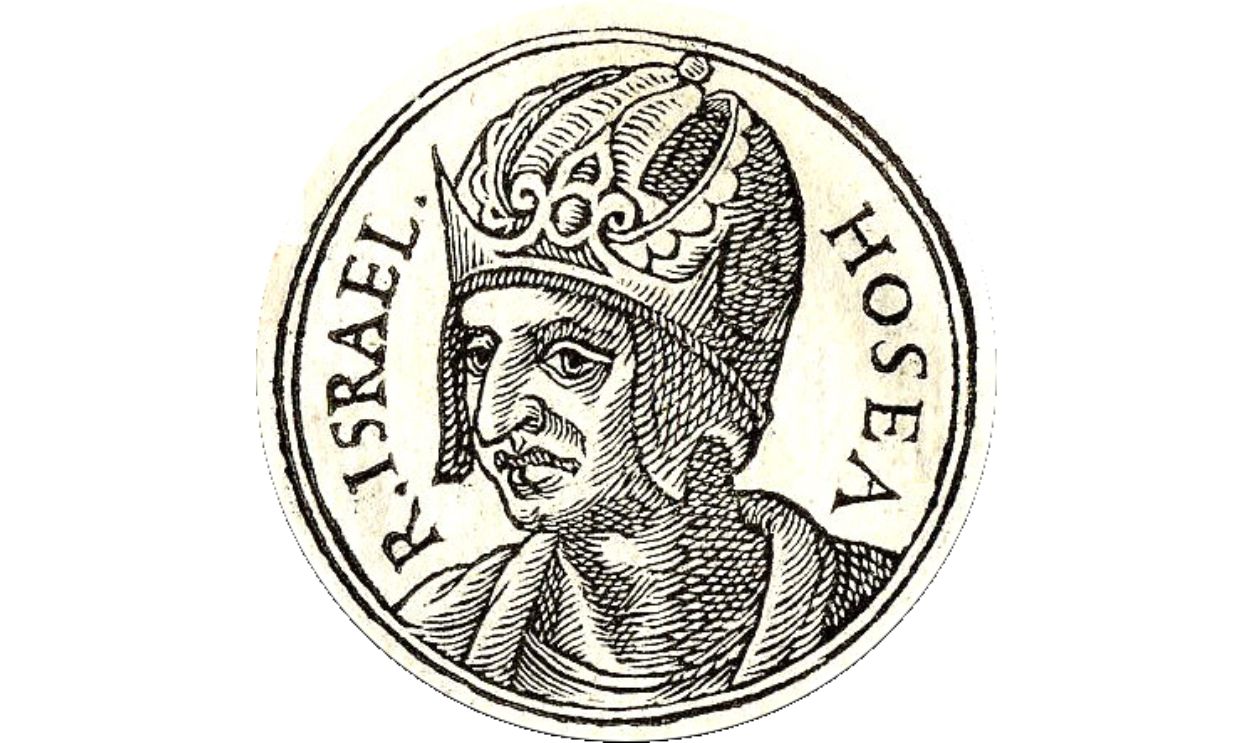 Guillaume Rouille, Wikimedia Commons
Guillaume Rouille, Wikimedia Commons
Artaxerxes Supporting Jerusalem (Nehemiah 2)
Persian aid helped rebuild Jerusalem and foster stability. The Elephantine Papyri records Artaxerxes’s support for the Judean exiles in the fifth century BCE. These documents mirror biblical themes of restoration, which shows how Persian bureaucracy aided distant communities and ensured the revival of Jewish life in the region.
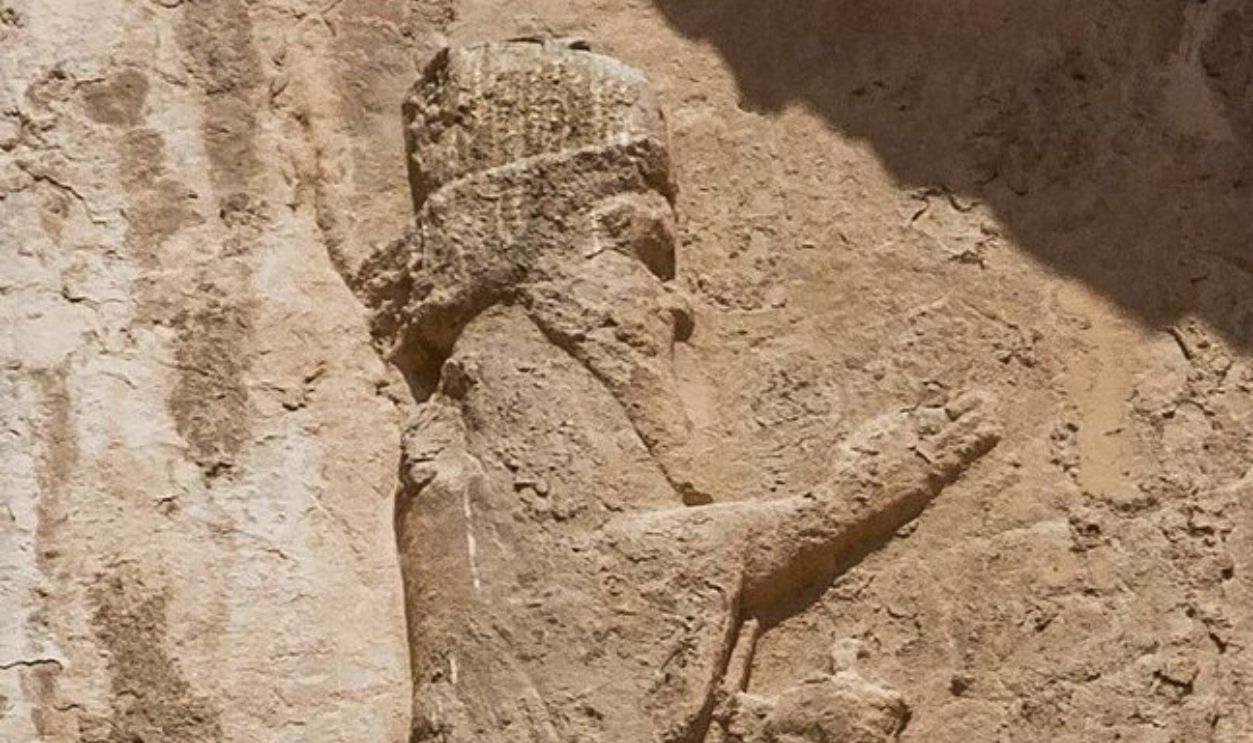 Diego Delso, CC BY-SA 4.0, Wikimedia Commons
Diego Delso, CC BY-SA 4.0, Wikimedia Commons
Tiglath Pileser III Expansion (2 Kings 15:29)
Cuneiform texts recount Tiglath-Pileser III’s eighth-century BCE campaigns into Israel and Judah. His swift annexations, through diplomacy and force, reflect shifting biblical alliances. Etched in clay, these records capture an empire’s rising confidence and its relentless drive for expansion.
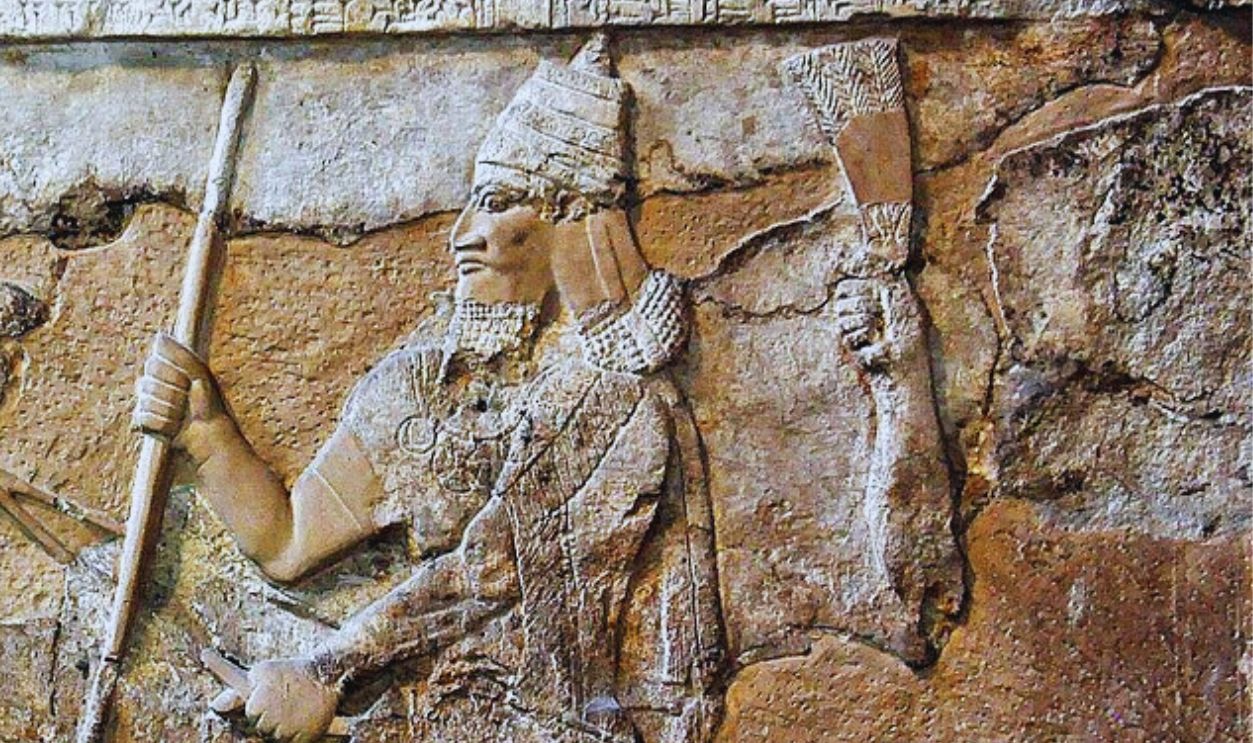 Osama Shukir Muhammed Amin FRCP(Glasg), CC BY-SA 4.0, Wikimedia Commons
Osama Shukir Muhammed Amin FRCP(Glasg), CC BY-SA 4.0, Wikimedia Commons
Shalmaneser V And Samaria (2 Kings 17:3-6)
Samaria's lengthy conflict and eventual fall reshaped the region’s power structure. Assyrian inscriptions reveal Shalmaneser V’s siege of the city in 722 BCE, which precedes Sargon II’s reign. These Assyrian texts underscore the geopolitical shifts that led to Israel’s destruction, complementing the biblical accounts of Samaria’s demise.
 Guillaume Rouille(1518?-1589), Public domain, via Wikimedia Commons
Guillaume Rouille(1518?-1589), Public domain, via Wikimedia Commons
Sargon II, Found In Isaiah (Isaiah 20)
In Isaiah 20, the biblical prophet references Sargon II, whose 711 BCE campaign conquered Ashdod. Excavations in Khorsabad confirm his major building projects and imperial victories. These findings deepen our understanding of the historical reality behind biblical events, connecting sacred texts with the rich material record.
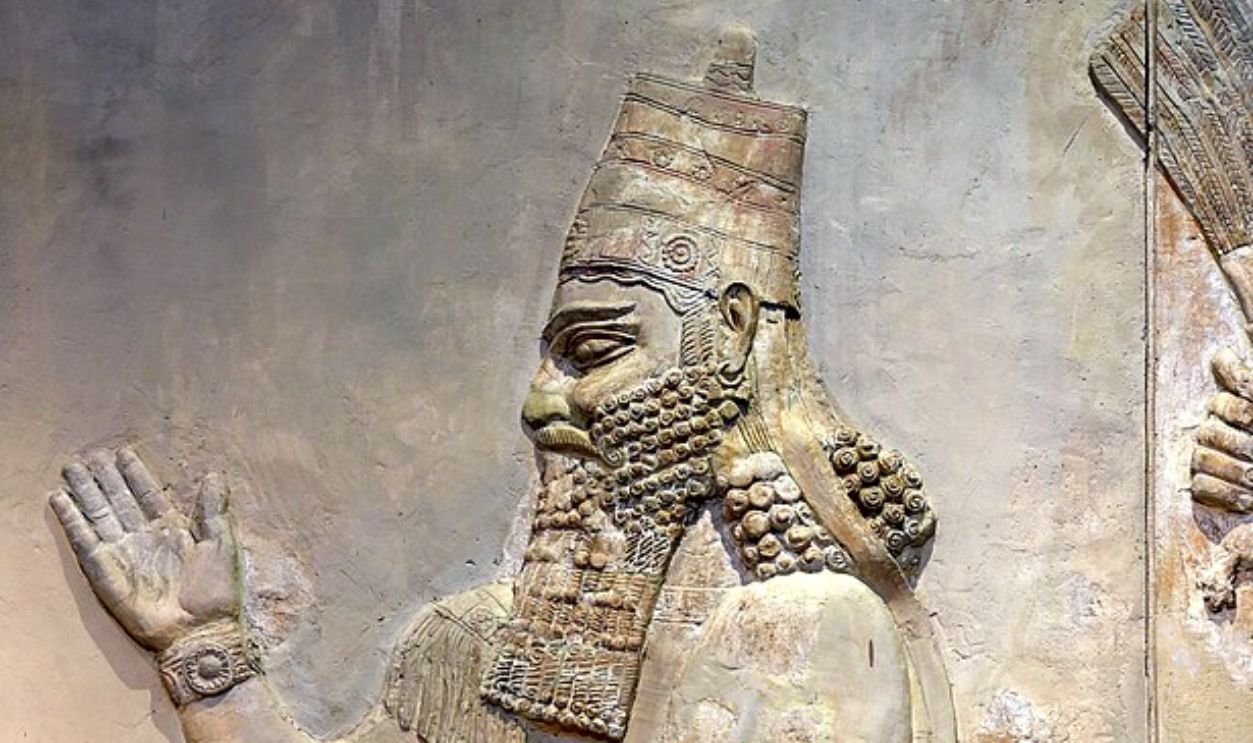 Osama Shukir Muhammed Amin FRCP(Glasg), CC BY-SA 4.0, Wikimedia Commons
Osama Shukir Muhammed Amin FRCP(Glasg), CC BY-SA 4.0, Wikimedia Commons
Johanan, The High Priest In Elephantine (Nehemiah 12)
Fifth-century BCE letters from Elephantine mention Johanan, connected to Nehemiah 12. This Jewish community near Aswan maintained a strong religious bond with Jerusalem. The documents reveal a shared identity and political structure, which shows how priestly authority continued to influence post-exilic communities even far from home.
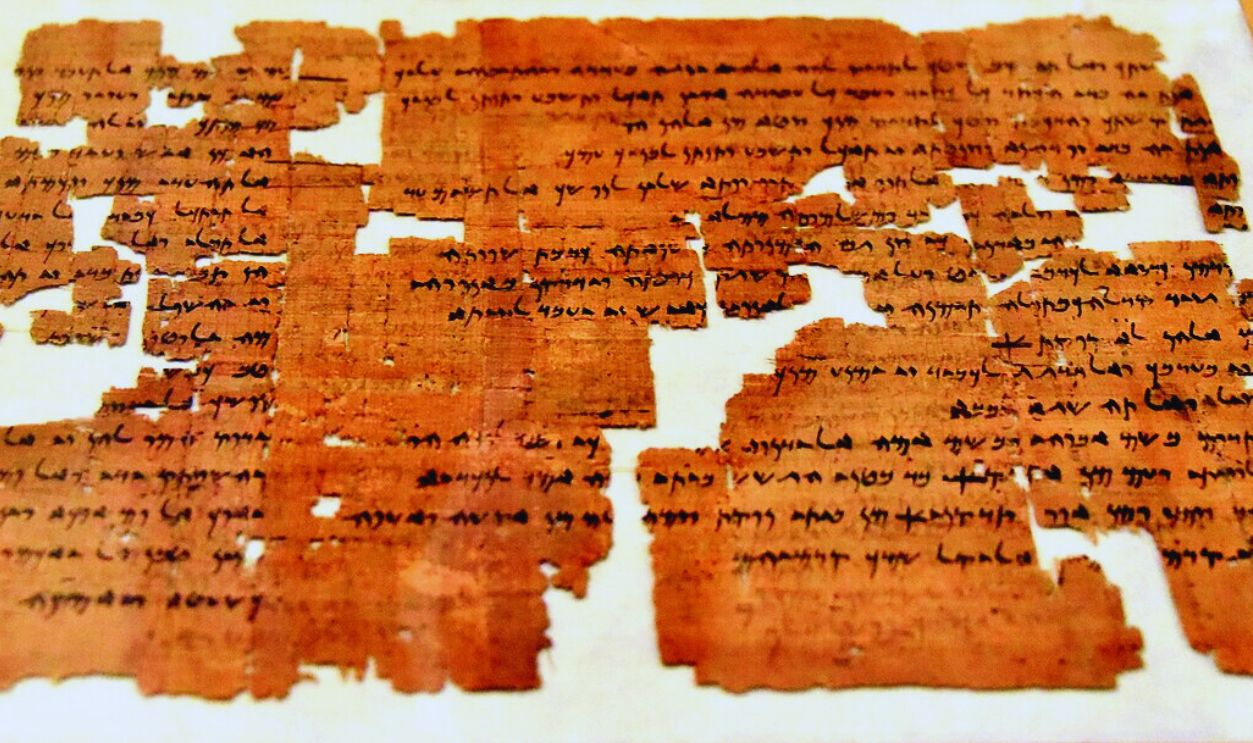 Osama Shukir Muhammed Amin FRCP(Glasg), CC BY-SA 4.0, Wikimedia Commons
Osama Shukir Muhammed Amin FRCP(Glasg), CC BY-SA 4.0, Wikimedia Commons
John The Baptist, Proclaimed By Josephus (Matthew 3; Mark 1; Luke 3)
Flavius Josephus ( a first-century Jewish historian and priest) speaks of John the Baptist in first-century Judaea. His ethical position ran directly counter to Herod Antipas's rule. His report harmonizes with the Gospels, making John's influence and death more profound. History and scripture join forces here on a powerful prophecy.
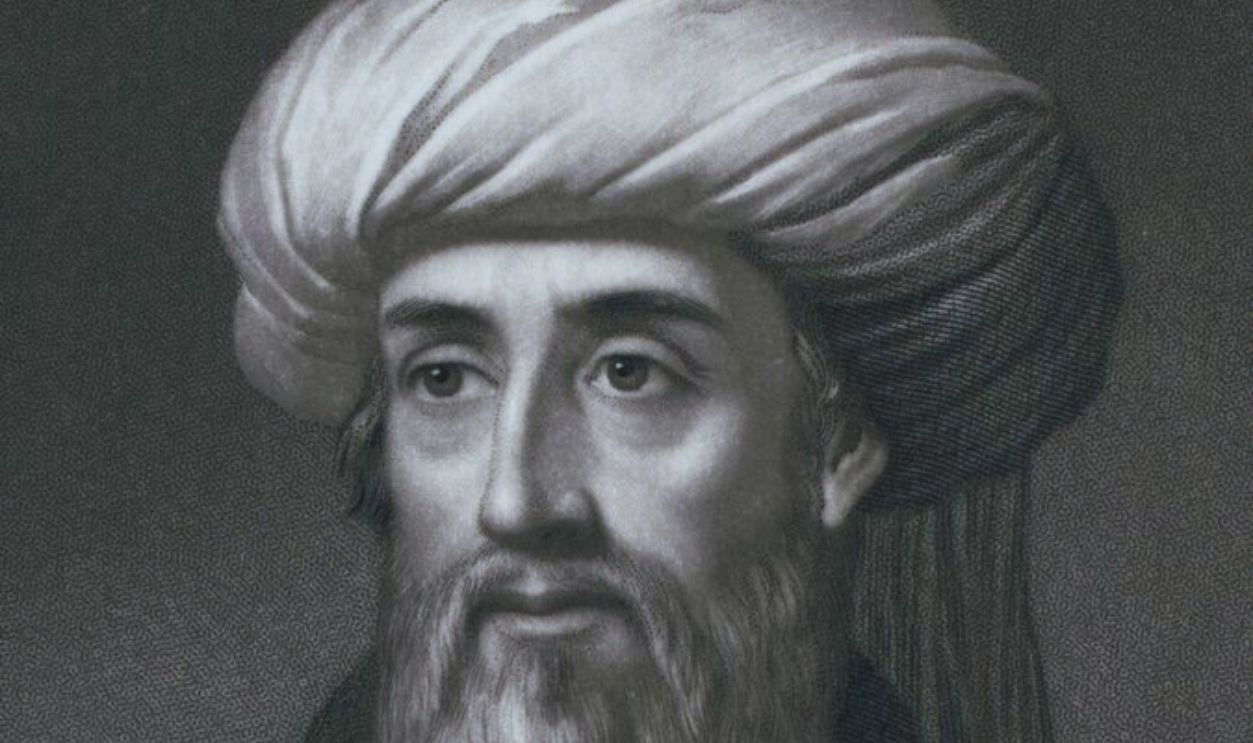 Scan by NYPL, Wikimedia Commons
Scan by NYPL, Wikimedia Commons
Jesus Documented In Ancient Histories (The Gospels)
Both Josephus and Tacitus (a Roman historian) mention Jesus, a figure who gathered followers in the first century CE. Their writings confirm his crucifixion and lasting impact. Also, Roman governance and emerging faith communities intersect in these ancient records. These sources provide a wider perspective on his enduring influence.
Balaam, The Seer At Deir Alla (Numbers 22-24)
A discovery reflects the broad use of divinatory practices throughout the ancient Near East, which reveals shared cultural reverence. Eighth-century BCE inscriptions at Deir Alla tell of Balaam, son of Beor, and his ominous visions. This painted text connects with biblical references and shows the widespread respect for oracles.
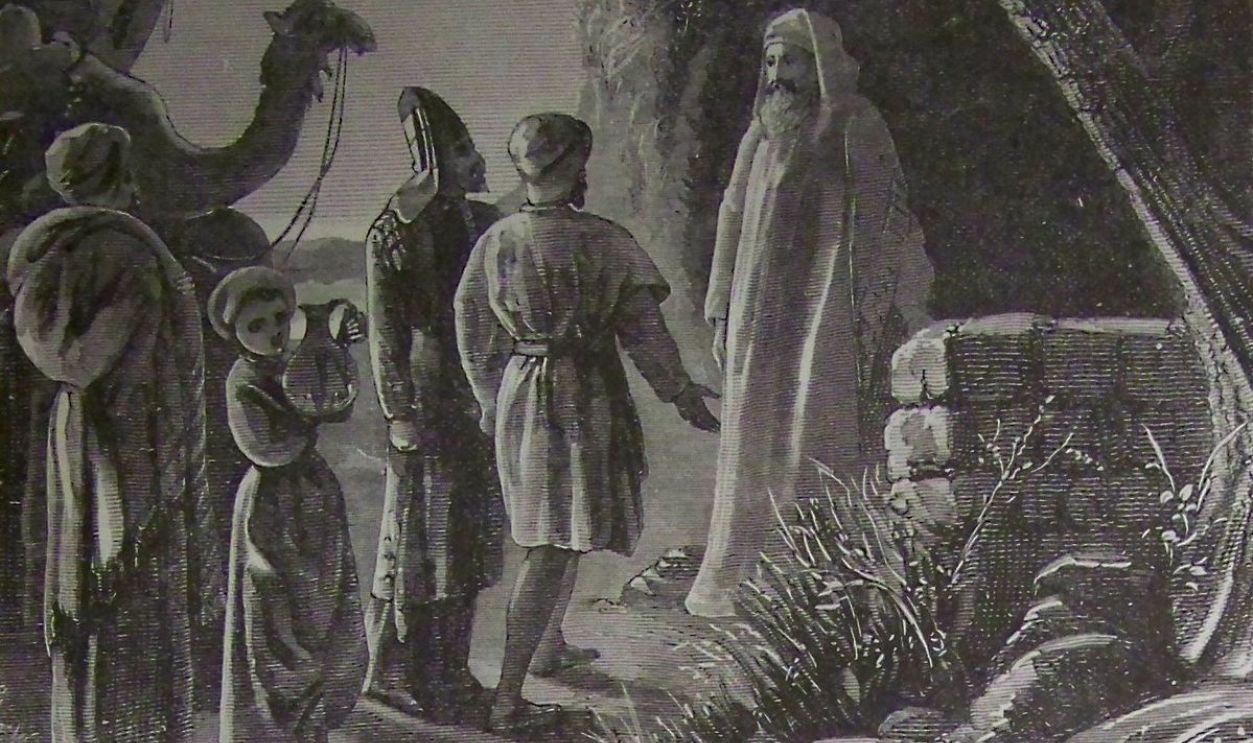 illustrators of the 1890 Holman Bible, Wikimedia Commons
illustrators of the 1890 Holman Bible, Wikimedia Commons
Gedaliah Son Of Pashhur (Jeremiah 38:1-6)
A sixth-century BCE bulla from Jerusalem named Gedaliah, son of Pashhur, which aligns with Jeremiah 38. These administrative seals recorded official dealings during Judah’s turmoil, and such artifacts shed light on governance in uncertain times. They reveal how leaders managed fragile alliances before exile.
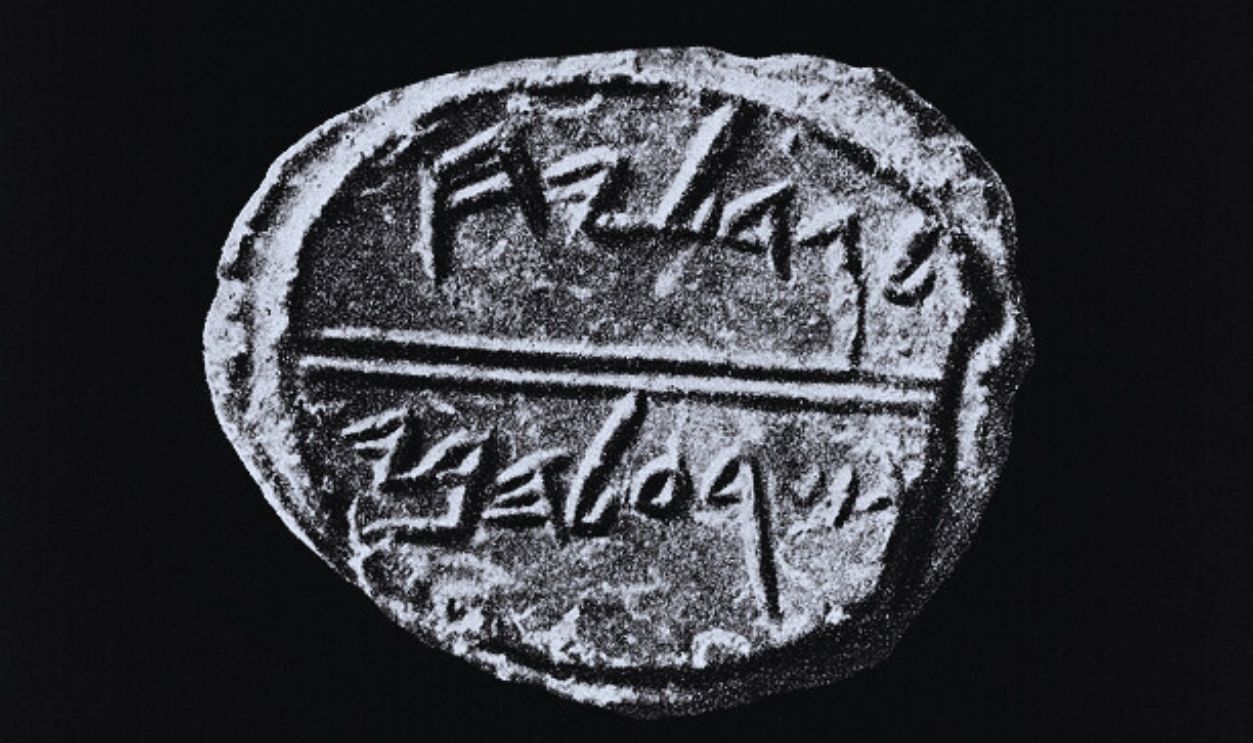 Unknown Author, CC BY 4.0, Wikimedia Commons
Unknown Author, CC BY 4.0, Wikimedia Commons
Bernice Sister To Agrippa (Acts 25:13-26:32)
Josephus paints a vivid picture of Bernice, sister of Herod Agrippa II, in the mid-first century CE. Her royal status intersected with Paul’s story, adding layers to political intrigue. Her family’s complex alliances and personal drama offer a glimpse into how power dynamics influenced religious discussions beyond Judea.
Drusilla And The Roman Court (Acts 24:24-27)
Josephus’s work also mentions Drusilla, daughter of Herod Agrippa I, who married Governor Felix. Her political role in the mid-first century CE reflects her influence in Roman courts. Scenes in Acts 24:24 align with historical accounts of her ambition and the pressures she faced, which reveals how politics shaped her personal narrative.
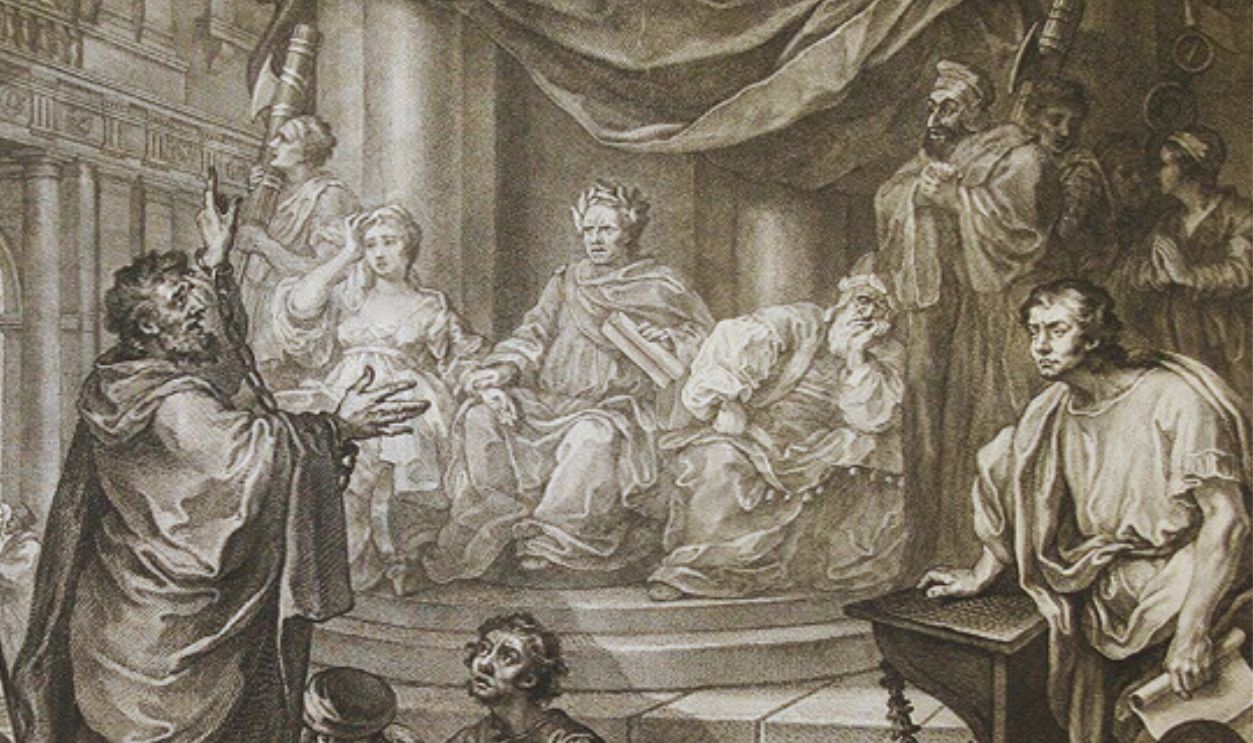 William Hogarth, Wikimedia Commons
William Hogarth, Wikimedia Commons
Pharaoh Neco And Josiah (2 Kings 23:29-30, 2 Chronicles 35:20-24)
Herodotus links Pharaoh Necho II’s campaigns with the tragic fall of King Josiah in 609 BCE. Their clash over trade routes and Judah’s independence reshaped alliances. These cross-cultural accounts reflect the shock of losing a reformist king, intertwining biblical narratives with historical and archaeological perspectives.
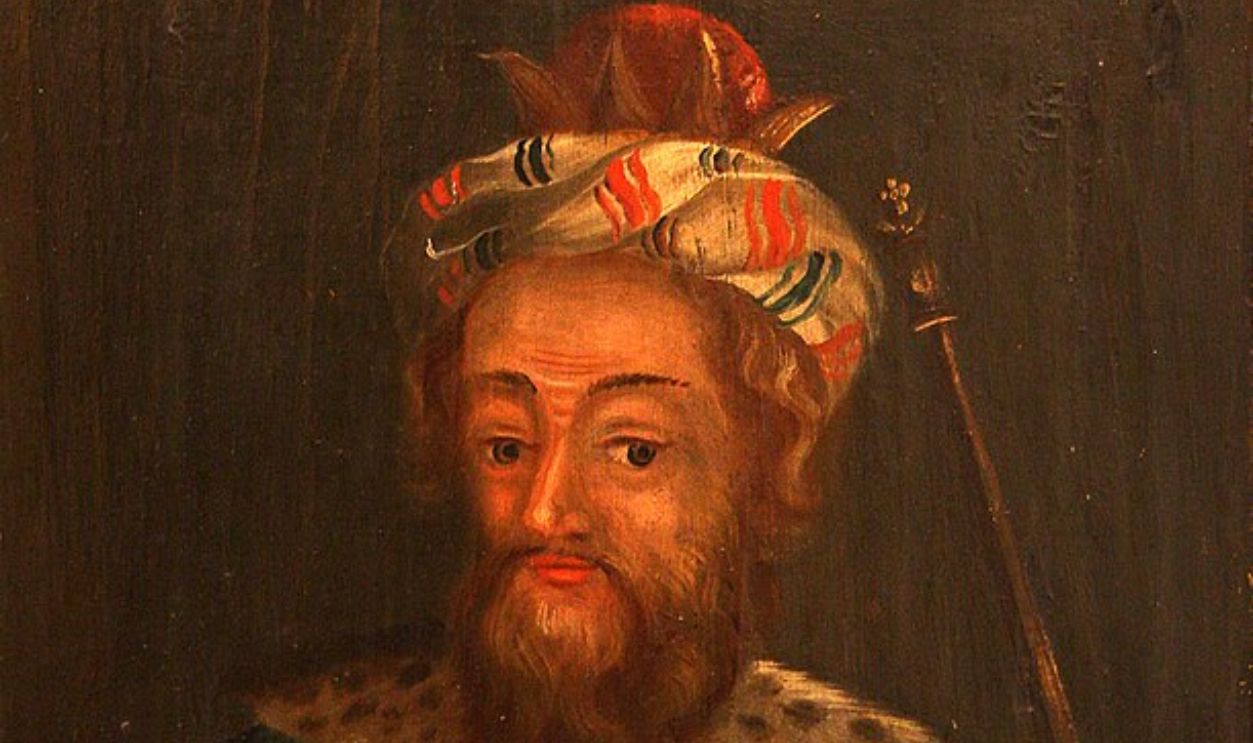 David Castor, Wikimedia Commons
David Castor, Wikimedia Commons
Herod The Great And Monumental Works (Matthew 2; Luke 1)
Modern archaeology plus Josephus's works highlight Herod the Great’s vast building projects in late-first-century BCE Judea. From Masada to Herodium, these architectural feats show the blend of Roman influence and Herod’s ambition. These enduring structures give us a glimpse into his reign, marked by grandeur and calculated control.
 Unknown Author, Wikimedia Commons
Unknown Author, Wikimedia Commons
Sanballat And Samaria (Nehemiah 2:10, 4:1-3)
The fifth-century BCE Elephantine Papyri reveals Sanballat’s connections to Samaria. Tensions with Nehemiah’s rebuilding efforts show a struggle for resources and power. These Aramaic documents expand on biblical accounts, which highlight how competition and shifting loyalties shaped Persian-era communities and their relationship with Jerusalem.
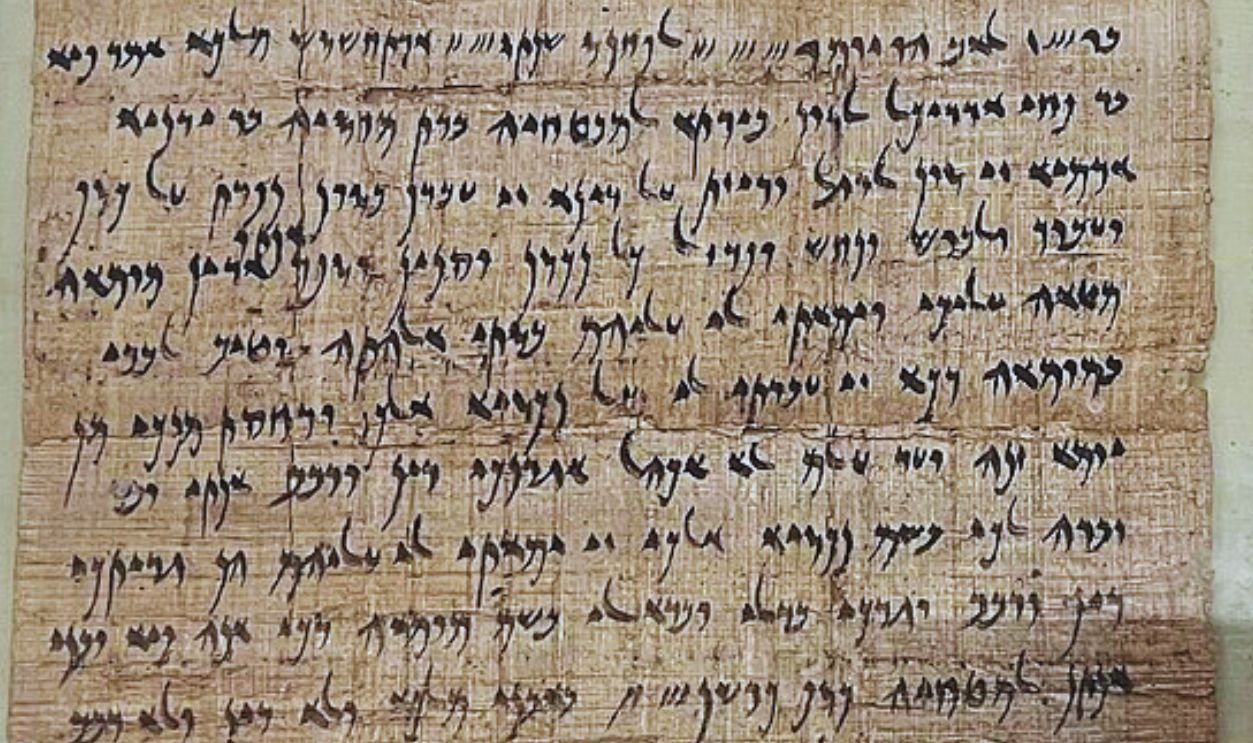 Onceinawhile, CC BY-SA 4.0, Wikimedia Commons
Onceinawhile, CC BY-SA 4.0, Wikimedia Commons
Herod Tetrarch Of Galilee (Luke 3:1)
Coins from Tiberias confirm Herod Antipas as Galilee’s tetrarch in the first century CE. Josephus links this era to John the Baptist’s execution. Antipas balanced power amid rising tensions. These coins and decrees highlight how personal decisions influenced key gospel events.
 Yorkshire Museum, CC BY-SA 4.0, Wikimedia Commons
Yorkshire Museum, CC BY-SA 4.0, Wikimedia Commons
Pontius Pilate Stone Evidence (Luke 23:1-25)
A limestone inscription from Caesarea named Pontius Pilate prefect under Emperor Tiberius. It confirms this first-century CE timeline, and the Gospel accounts place him at Jesus’s trial. This artifact connects biblical narratives with history and offers a rare, tangible link between Roman rule and Christianity’s origins.
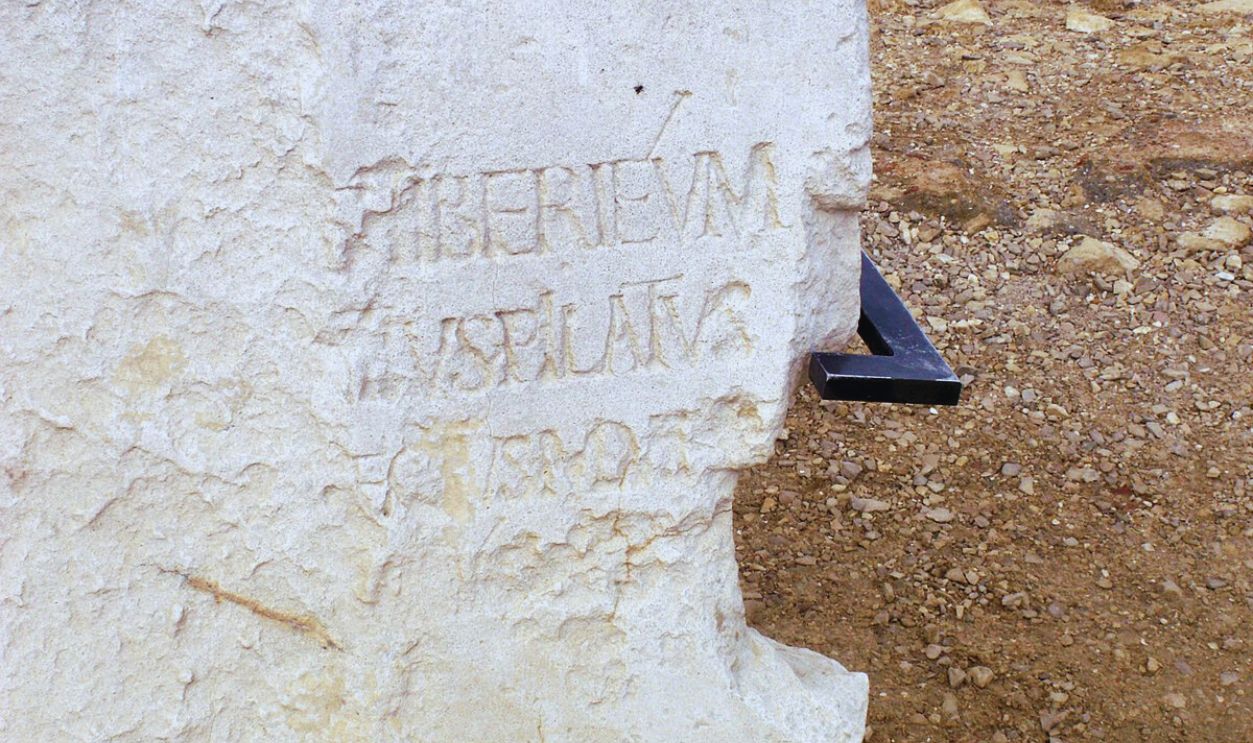 Marion Doss, CC BY-SA 2.0, Wikimedia Commons
Marion Doss, CC BY-SA 2.0, Wikimedia Commons
Caiaphas Ossuary Discovery (Matthew 26:3-4, John 11:49-53, John 18:12-14)
A first-century CE ossuary inscribed “Joseph son of Caiaphas” was discovered near Jerusalem, confirming New Testament references to the high priest. This find ties burial customs with scripture, offering concrete proof of religious leadership during this period. It’s a rare discovery that connects archaeological evidence with biblical accounts.
 Gerard van Honthorst, Wikimedia Commons
Gerard van Honthorst, Wikimedia Commons
Herod Agrippa I And Judean Rule (Acts 12:1-23)
Acts 12 captures the drama of Herod Agrippa I’s reign, and it reveals how quickly leadership (and fate) could change. Coins and Josephus’s writings shed light on his rule over Judea in the early first century CE. His ties to Emperor Claudius expanded his power.
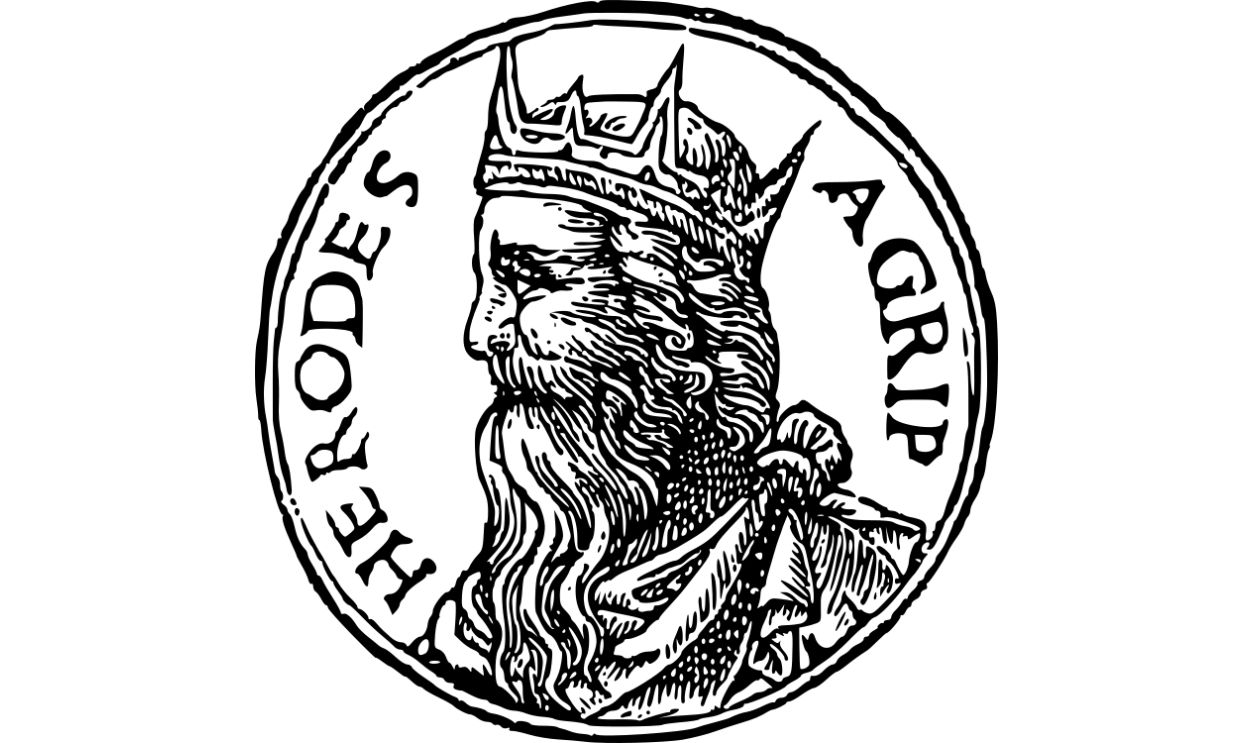 Georges Reverdy, Wikimedia Commons
Georges Reverdy, Wikimedia Commons
Herod Agrippa II Hears Paul (Acts 25-26)
Acts 25-26 recount Paul’s address before Herod Agrippa II, a scene backed by minted coins confirming the mid-first-century CE reign. Josephus provides additional context to the dynamics at play. This meeting reflects how local rulers influenced broader cultural discourse, with trials serving as a stage for all exchange.
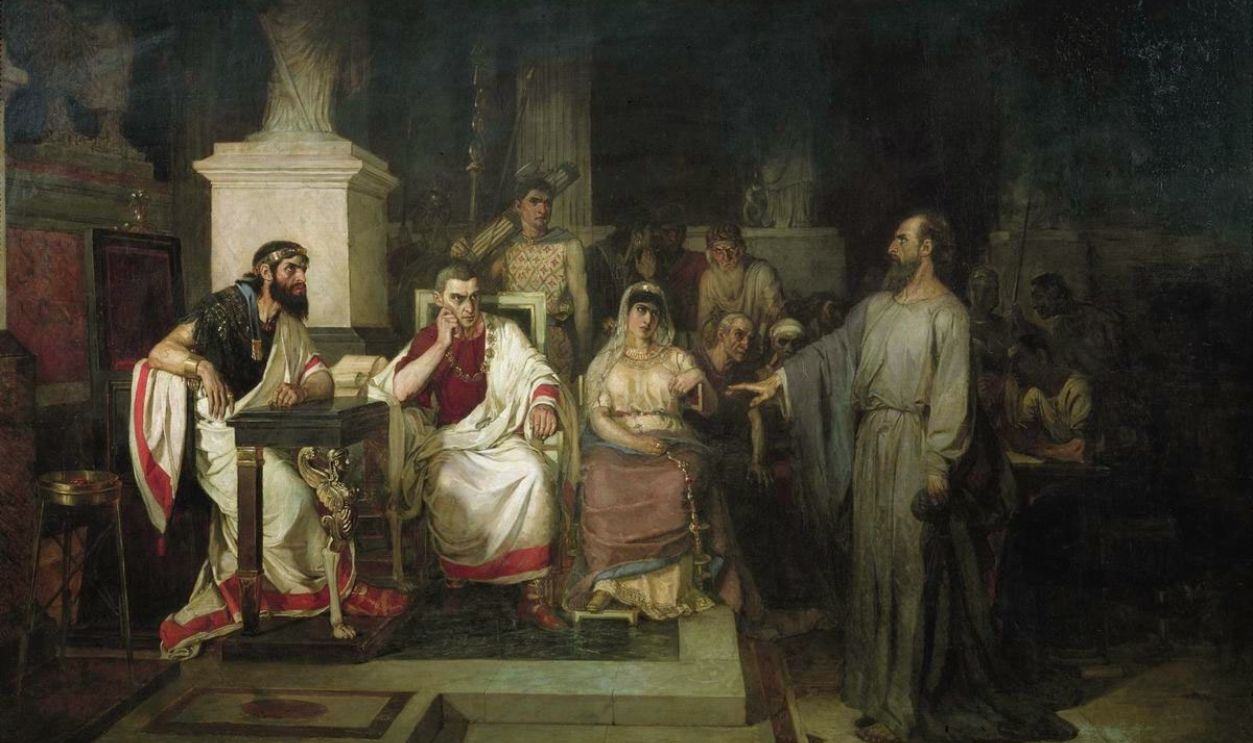 Vasily Surikov, Wikimedia Commons
Vasily Surikov, Wikimedia Commons
Gallio As Proconsul In Achaia (Acts 18:12-17)
Gallio’s tenure as proconsul around 51 CE has been recorded in the Delphi Inscription, which aligns with Acts 18 during Paul’s ministry in Corinth. Greek epigraphy details Roman judicial systems and offers a precise historical backdrop. This inscription helps anchor early Christian expansion within the Roman provincial structure.
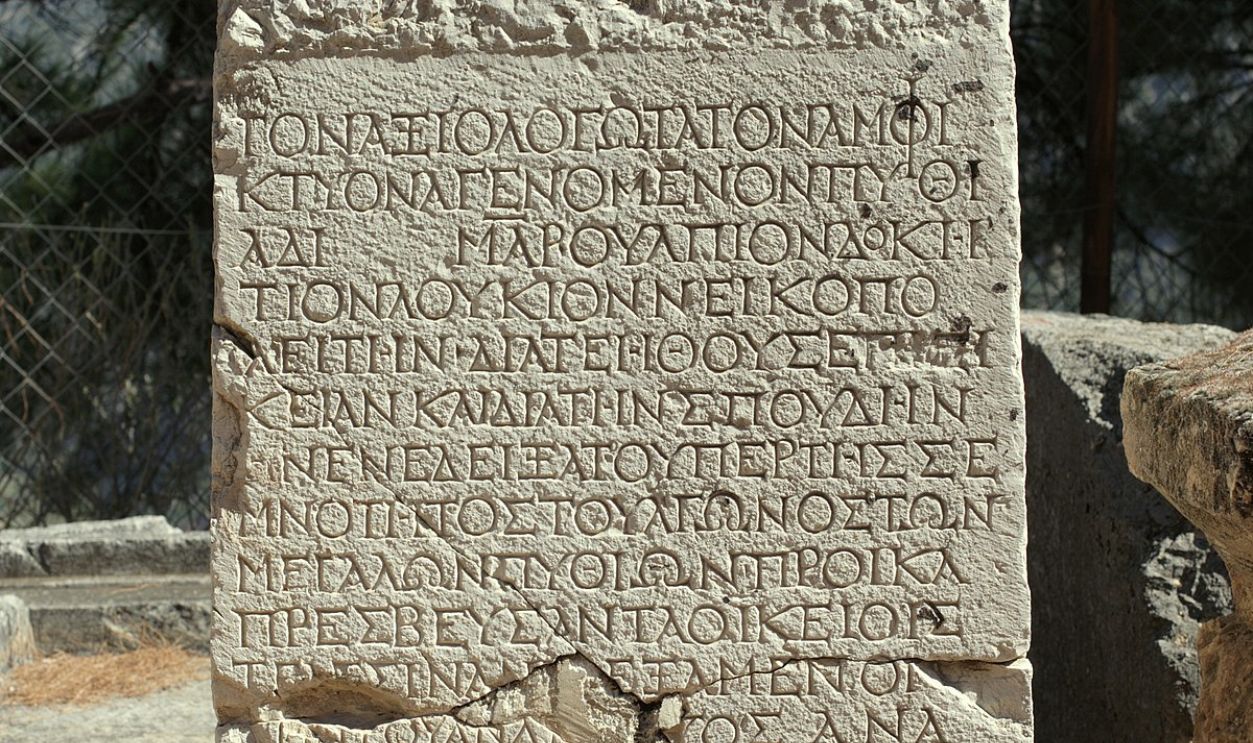 Zde, CC BY-SA 4.0, Wikimedia Commons
Zde, CC BY-SA 4.0, Wikimedia Commons
Sergius Paulus In Cyprus (Acts 13:6-12)
Cypriot inscriptions identify Sergius Paulus as proconsul, matching the events in Acts 13 during the first century CE. These records reveal Cyprus’s Roman governance and its influence on early missionary work. They provide insight into how local political authority interacted with the spread of new religious ideas across the Mediterranean.
Tiberius Caesar (Luke 3:1)
The reign of Tiberius Caesar from 14 to 37 CE has been documented by the Tacitus and Suetonius. Luke 3 places John the Baptist's ministry in this time. These early writings synchronize political and religious history, verifying how Roman decrees influenced Judea's religious life, giving a richer context to the gospel account.
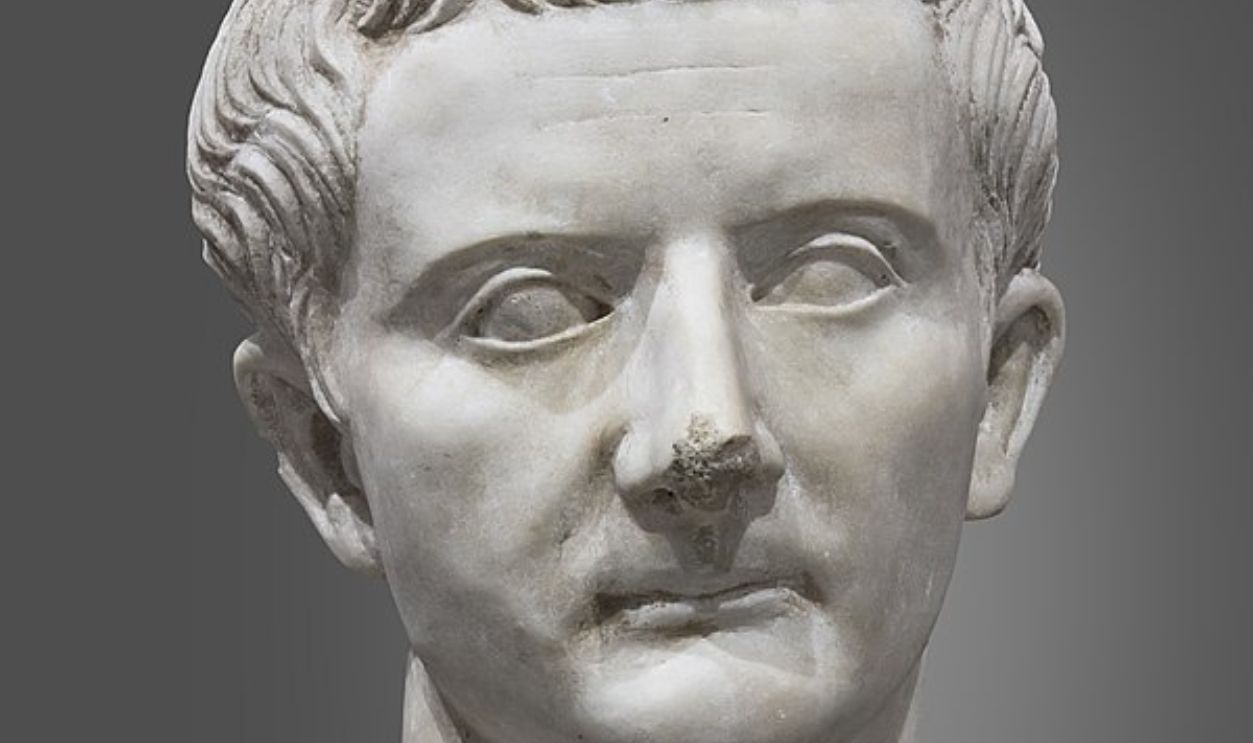 Musee Saint-Raymond, Wikimedia Commons
Musee Saint-Raymond, Wikimedia Commons
Augustus Caesar Ordering Census (Luke 2:1-5)
The Res Gestae Divi Augusti outlines reforms by Augustus, the first Roman Emperor (27 BCE–14 CE). Luke 2 mentions a Roman census that aligns with these reforms, where populations were required to register. This administrative act connects large-scale policies with personal stories of ordinary citizens living under imperial rule.
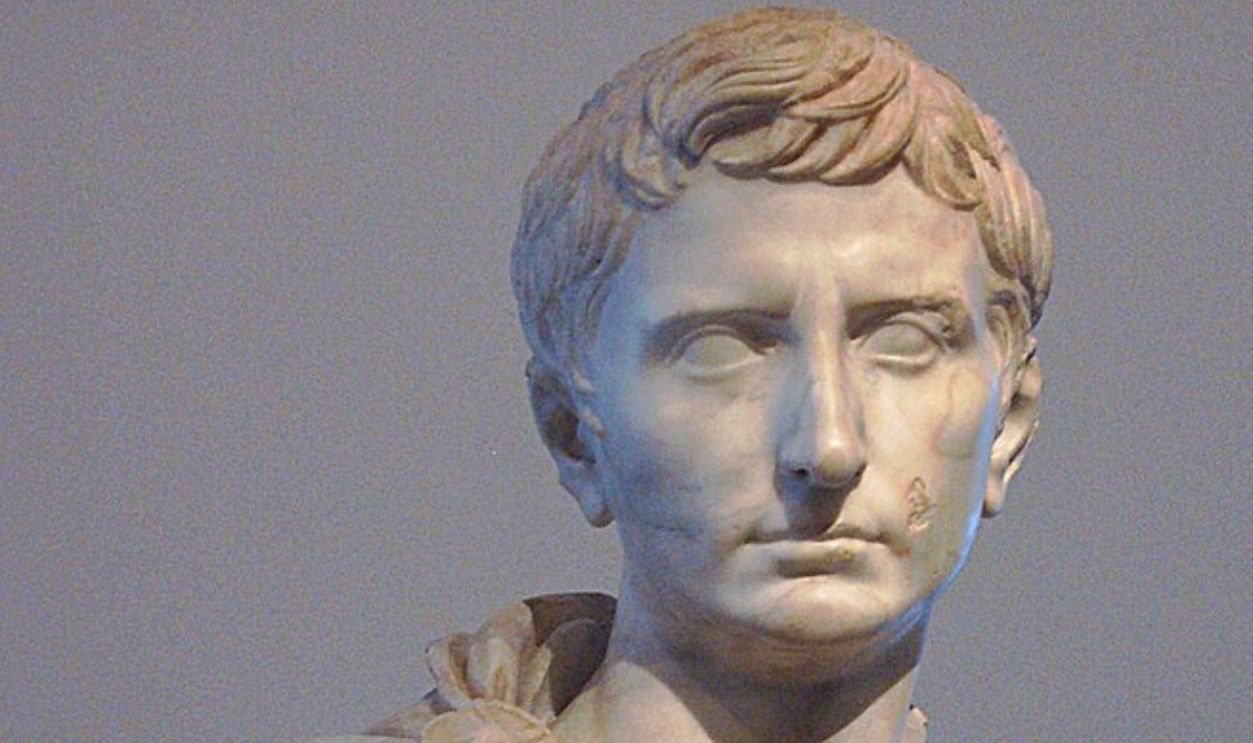 Gautier Poupeau from Paris, France, CC BY 2.0, Wikimedia Commons
Gautier Poupeau from Paris, France, CC BY 2.0, Wikimedia Commons
Claudius Caesar And Early Christians (Acts 18:2)
A mid-first-century CE edict by Emperor Claudius banished Jews from Rome, as noted in Acts 18. Suetonius's accounts verify these uprisings. This policy, though oppressive, caused early Christians to migrate, disseminating their faith throughout the empire. The context emphasizes how imperial policies inadvertently shaped the spread of Christianity.
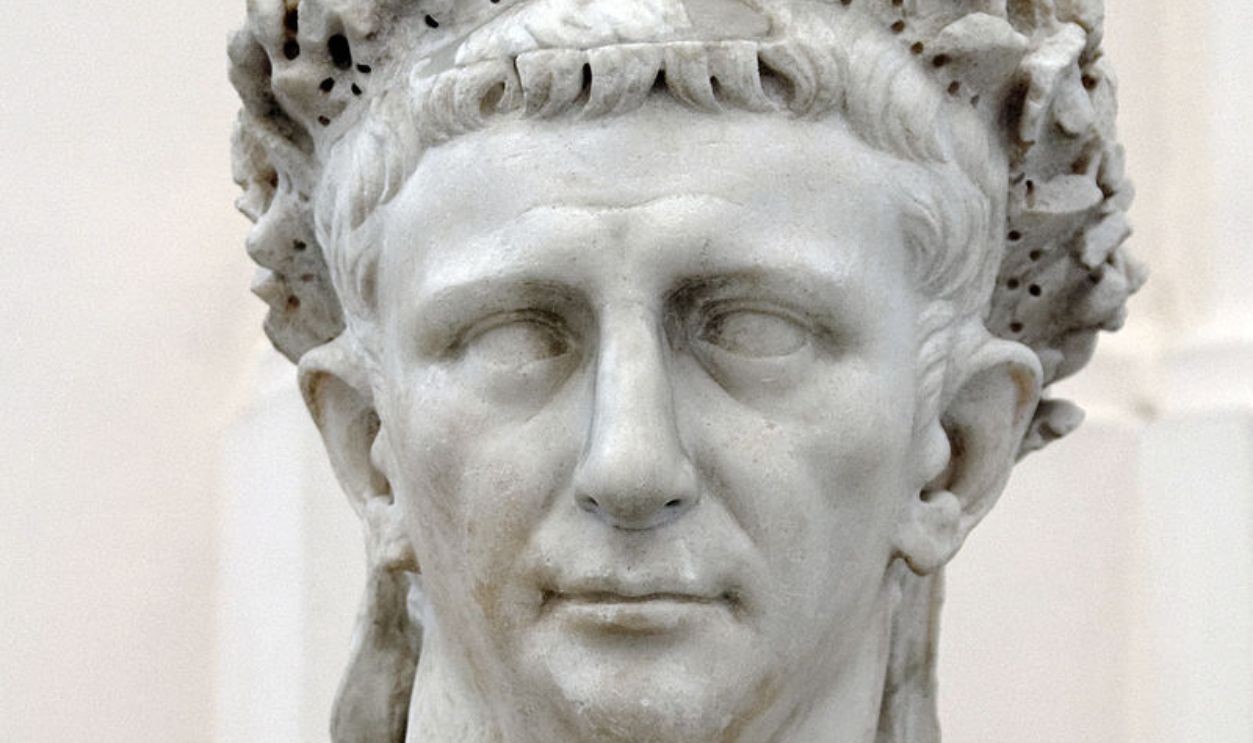 Naples National Archaeological Museum, CC BY 2.5, Wikimedia Commons
Naples National Archaeological Museum, CC BY 2.5, Wikimedia Commons
Esarhaddon Heir Of Sennacherib (2 Kings 19:37)
Prisms record Esarhaddon’s seventh-century BCE empire-building after Sennacherib’s death. His dominance over rebellious regions bolstered Assyrian power. Biblical accounts align with these contemporary records of rising strength. Written documents reveal a transition of aggression, with father-to-son succession reshaping the geopolitics of vulnerable lands.
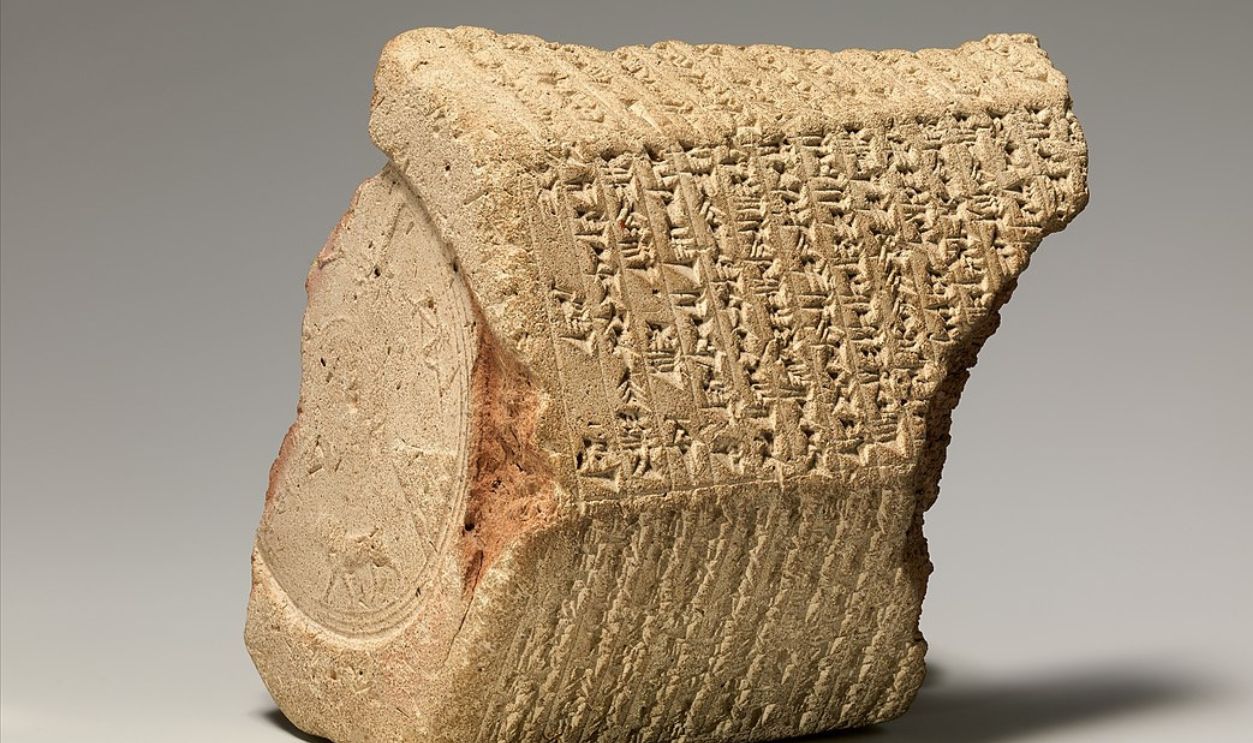 Metropolitan Museum of Art, CC0, Wikimedia Commons
Metropolitan Museum of Art, CC0, Wikimedia Commons
Ashurbanipal The Mighty Conqueror (Ezra 4:10)
Clay annals from 669–631 BCE celebrate Ashurbanipal’s victories over neighboring lands. Some scholars link him to Ashurbanipal in Ezra 4:10. His reign marked the peak of Assyrian power, with grand libraries and relentless military campaigns. These inscriptions depict a powerful and multifaceted ruler shaping Assyrian history.
 Carole Raddato from FRANKFURT, Germany, CC BY-SA 2.0, Wikimedia Commons
Carole Raddato from FRANKFURT, Germany, CC BY-SA 2.0, Wikimedia Commons
Erastus The Corinth Official (Romans 16:23)
Erastus was part of a team overseeing public works that bound civic life with governance. A Corinthian pavement inscription mentions him, possibly the city treasurer noted in Romans 16:23. Paul’s reference to him highlights the intersection of faith and political life, showing how everyday roles impacted ministry efforts.
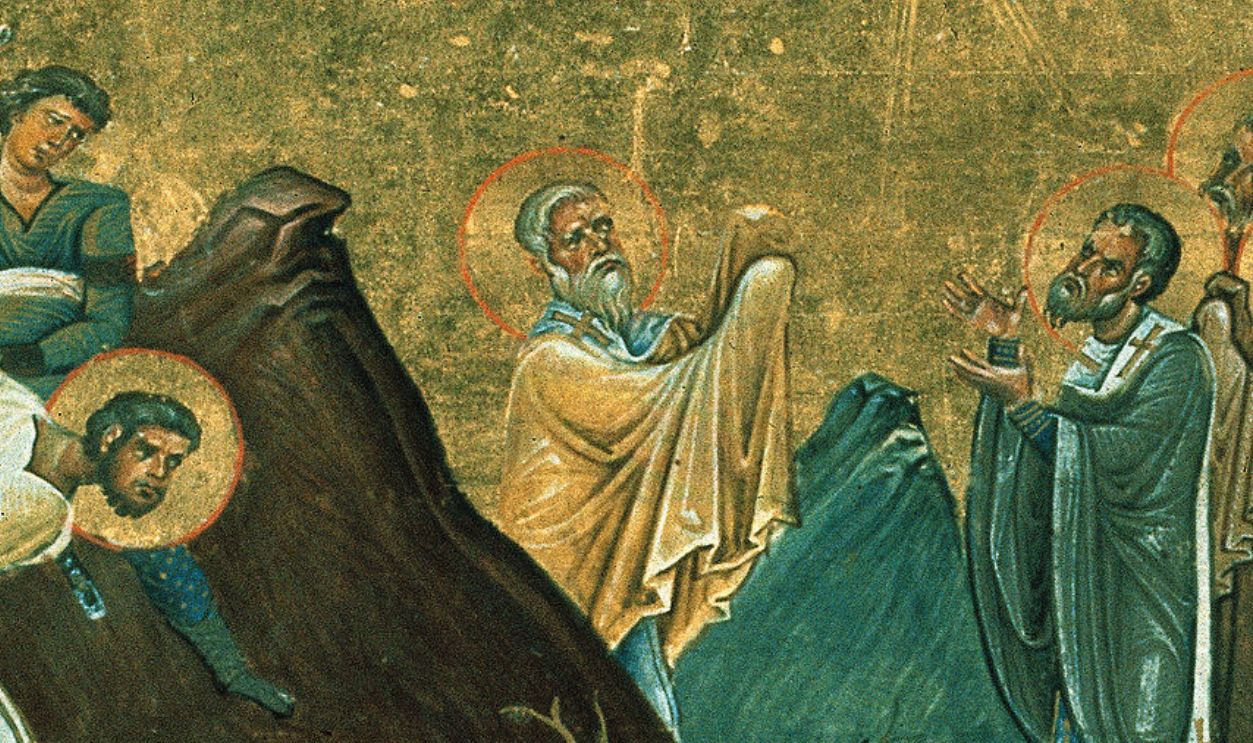 Unknown author, Wikimedia Commons
Unknown author, Wikimedia Commons
Felix The Governor In Acts (Acts 23-24)
Josephus and Tacitus describe Antonius Felix's governorship as consistent with the events of Acts 23–24. Mid-first-century Judea was marred by bribes, insurrections, and political tension. Paul's trials took place during this disorder, and Roman authority's influence on early Christianity can be learned from history and biblical records.
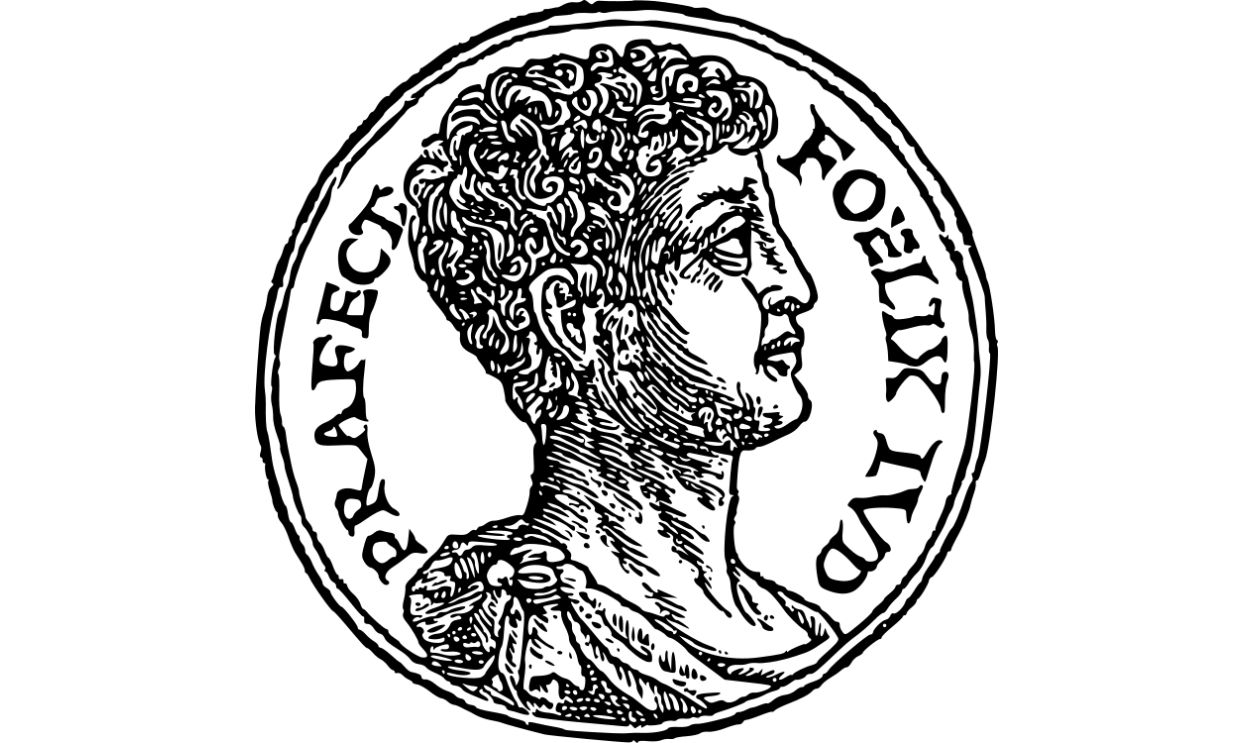 Georges Reverdy, Wikimedia Commons
Georges Reverdy, Wikimedia Commons
Belshazzar, The Crown Prince (Daniel 5)
Cuneiform inscriptions shed light on Belshazzar’s royal responsibilities and how Babylon’s final days unfolded unexpectedly, with power receding rapidly during his reign. The Nabonidus Cylinder identifies Belshazzar as co-regent in mid-sixth-century BCE Babylon. His dramatic downfall, as described in Daniel 5, takes us through the story of shifting power dynamics.

